April 18, 2021
Martha O'Kennon
When April, with its sweet showers
hath pierced to the root the droughts of March,
And bathed every vein in such a liqueur
as that which truly will bring forth the flowers,
Oh my, if you will forgive my translation, every time those words come to me, I really feel at the same time tears of joy and sadness that the few people I know who could also stumble through the whole intro in Chaucerian verse are no longer or at least don't now greet me with those opening lines. You probably know I'm referring to Jim Cook, who has just left many of us. But it's about Spring and new beginnings as well as each of us packs for the pilgrimage, whenever it chooses to come. It's half-past April and the progression of blooms flows through the earth, one flower blooming as another folds up for the year.
Here we see one of Tim Lincoln's mom's favorite primroses, and one of mine too; the epimedium that Catherine Lamb brought me so long ago; and the wide-leaved grape hyacinth that Mary-Ann Dimand pointed out to me as a different species.

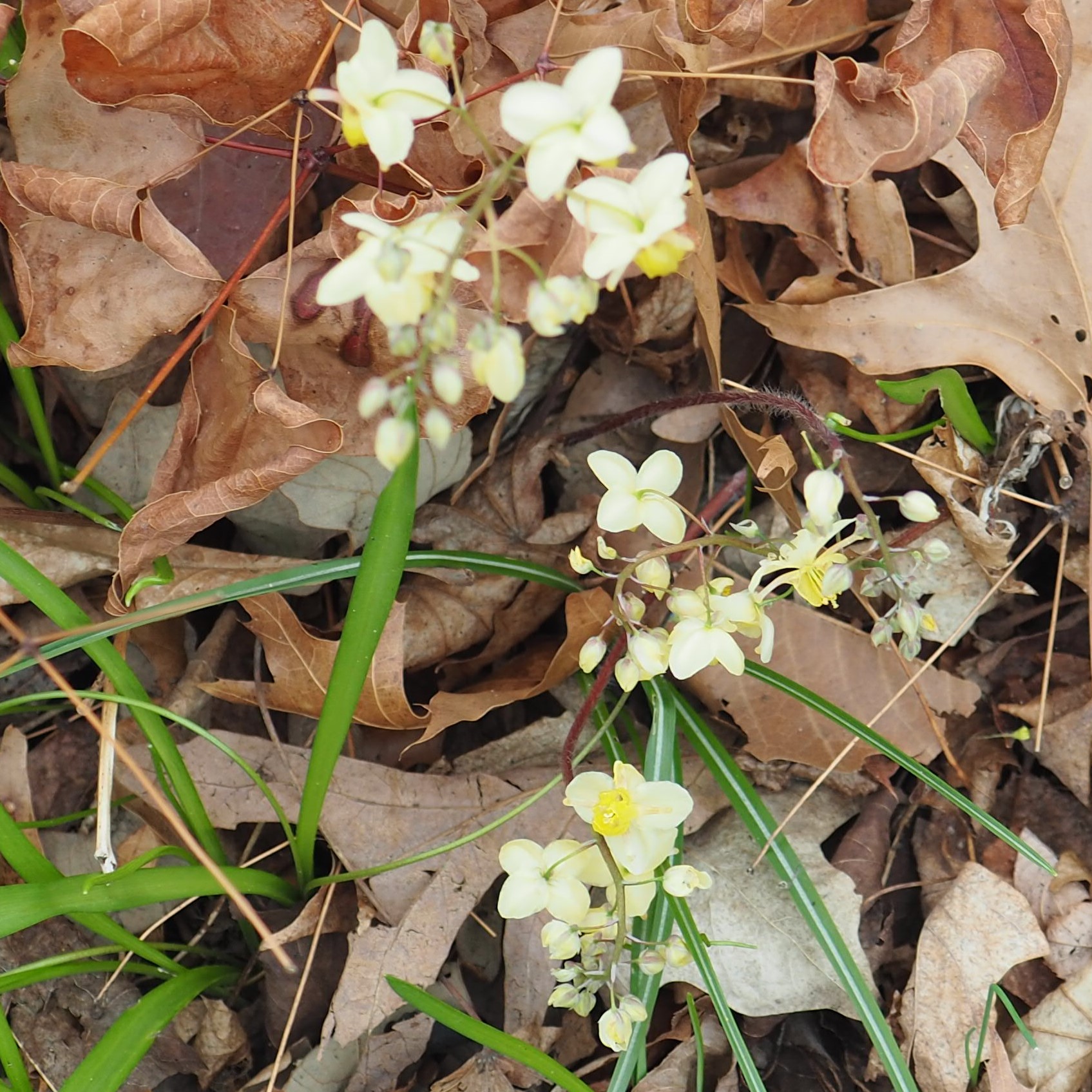
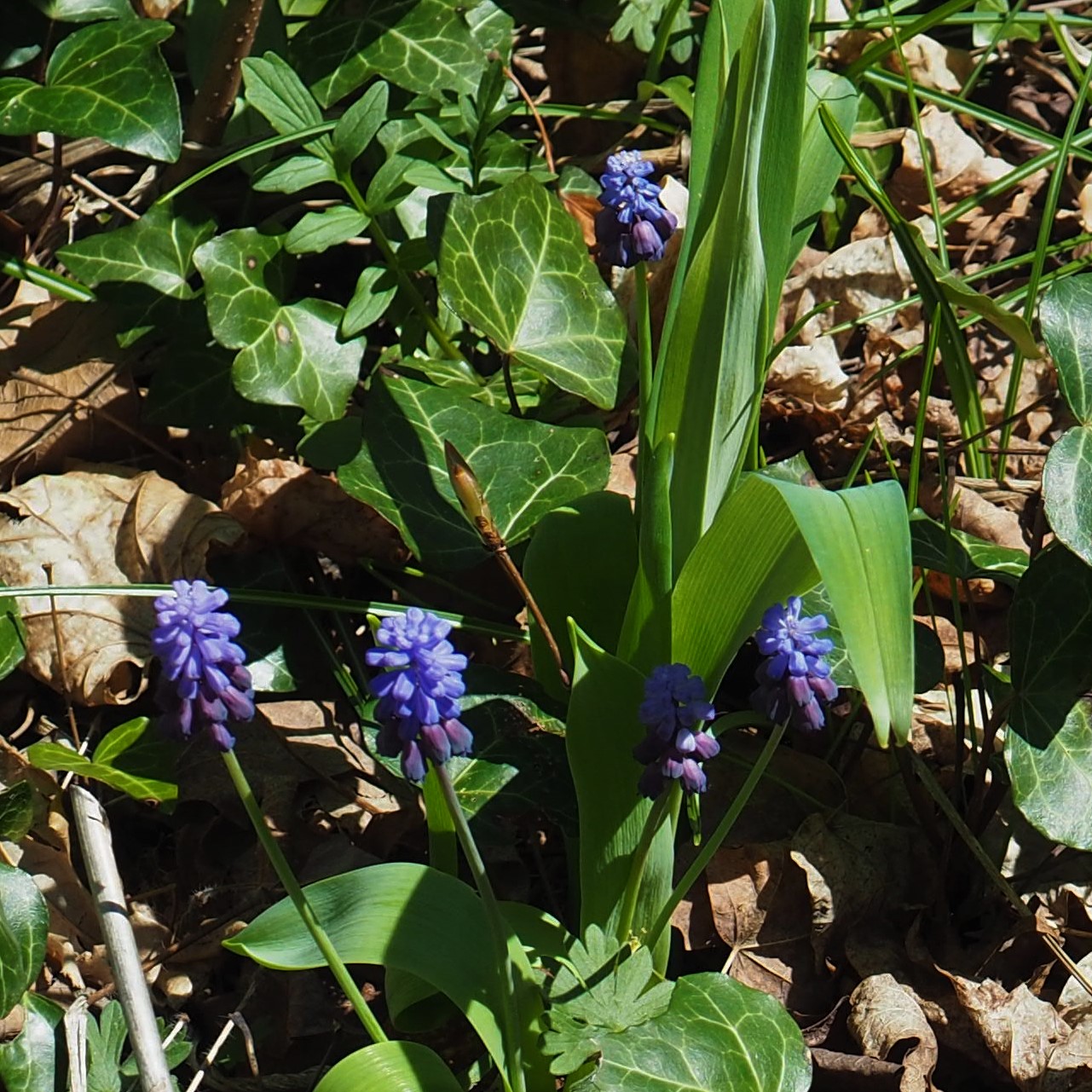
Remember that there is information in the name of the file for each image. You can see it by mousing over the image - look at the lower left of the screen. Or you can click on the image to get to the (usually) larger image. Then the info is displayed in the address line above. Sometimes the second click will actually display a different view of the original image.
Last week wasn't bad for Ants. Of course a few Small Honey Ants ran up and down the siding and obviously found plenty of fine liquor themselves, swelling their always large gasters. Another was seen in the dirt at the west end of the shop. I don't know whose ant hill it was, maybe it was made by one of the Queens we have been seeing near there.
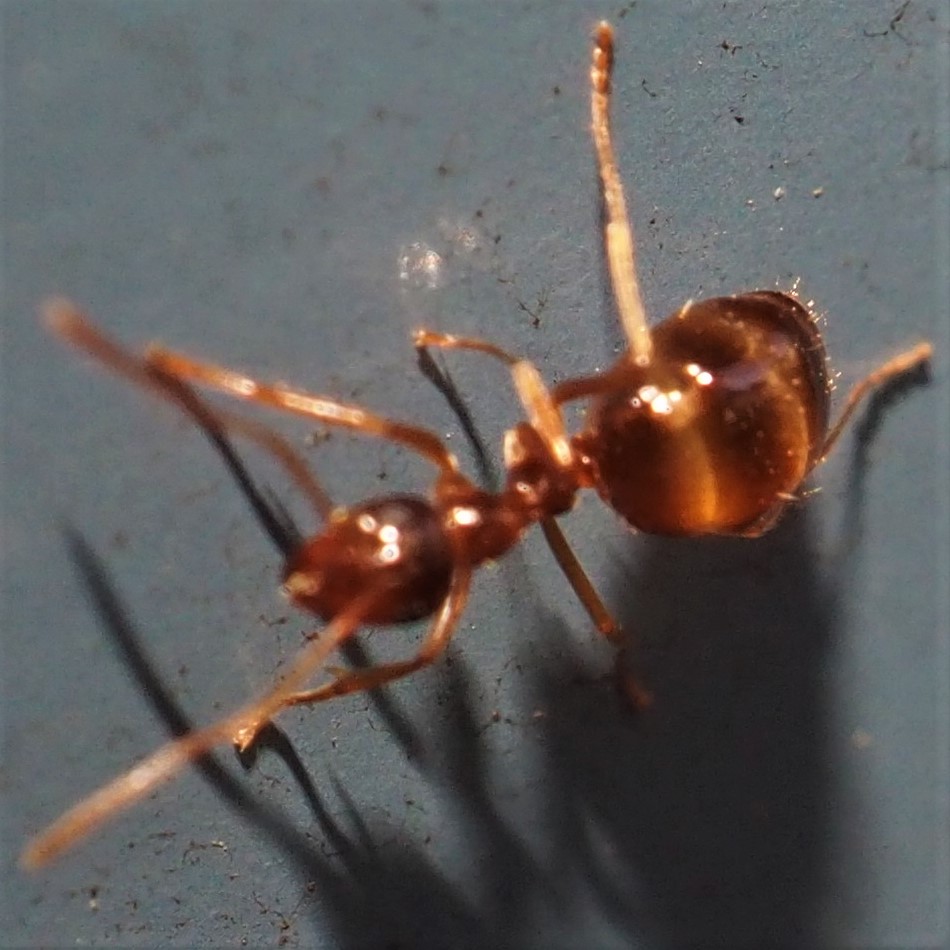
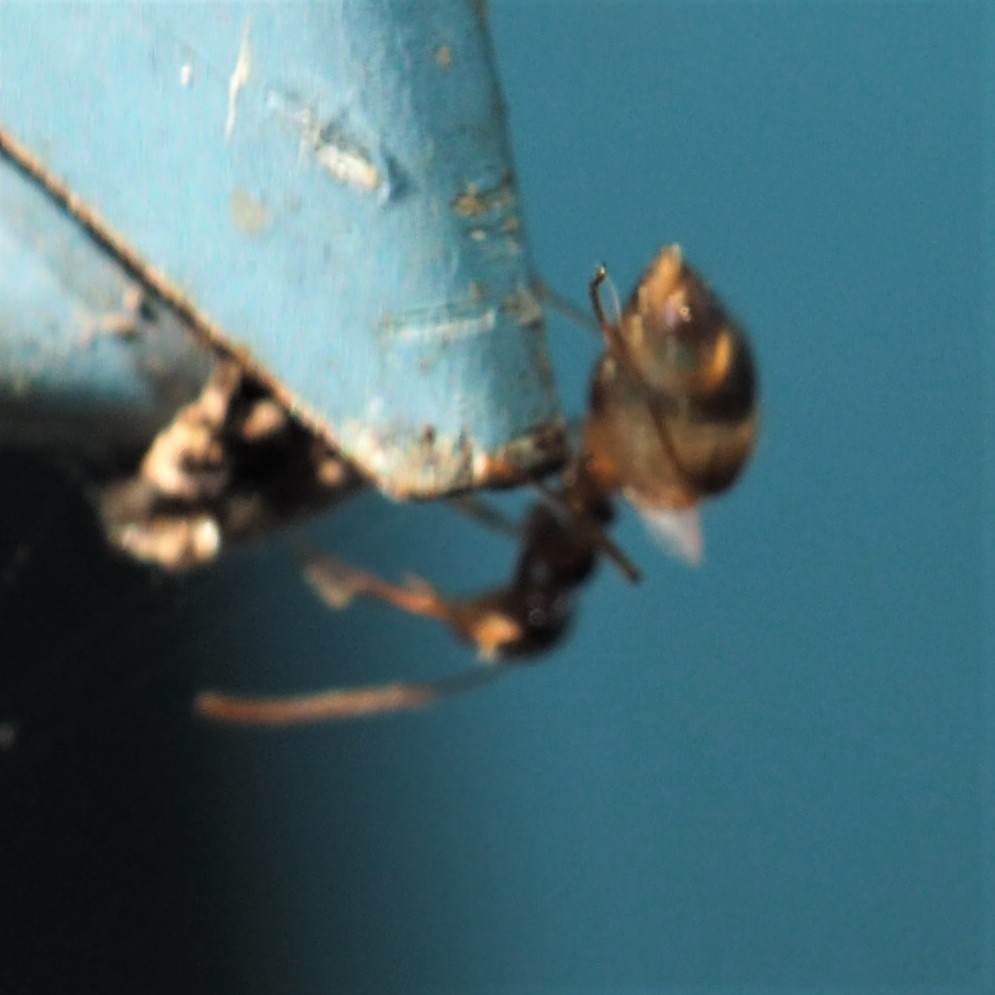
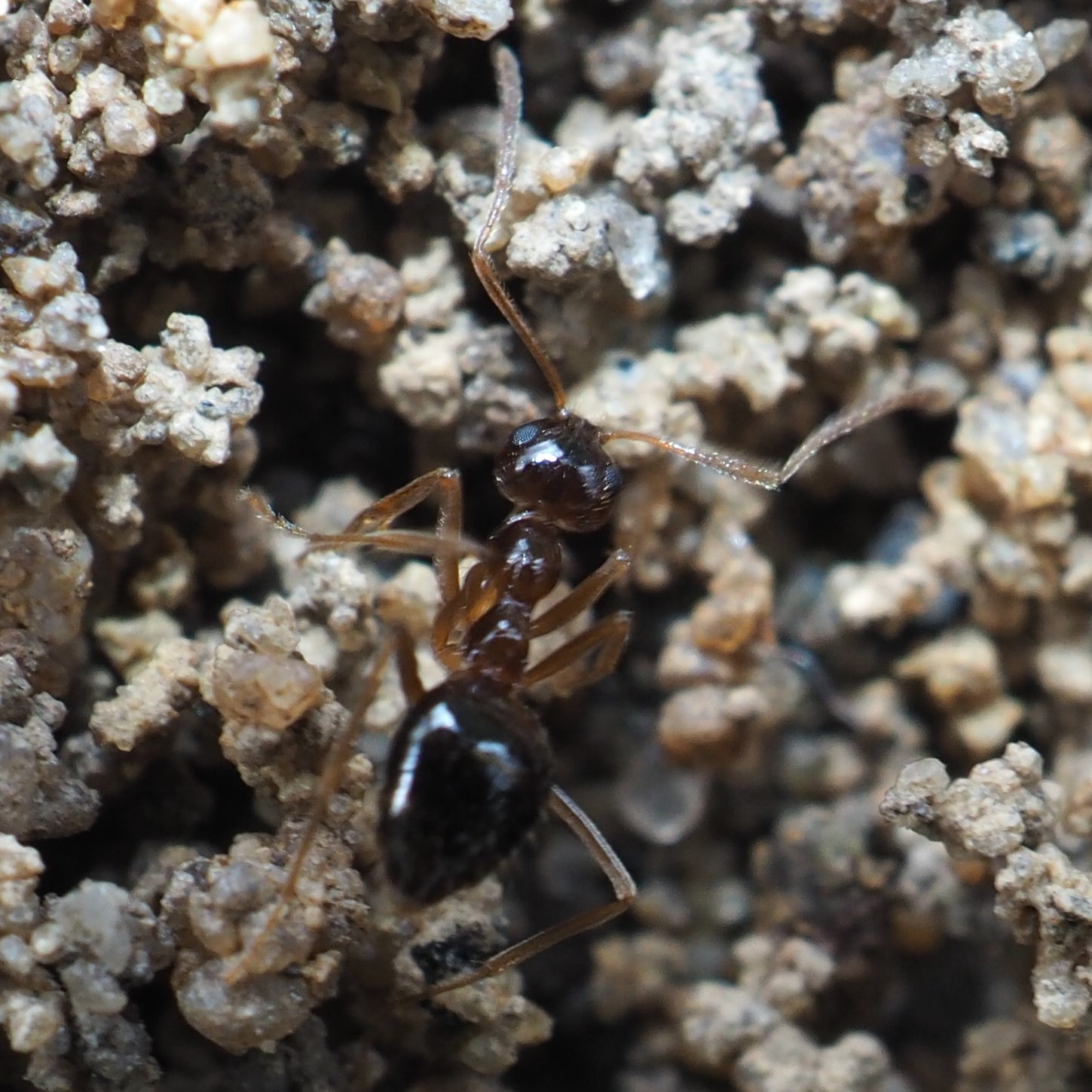
I rather think that ant hill was also a favorite of the Smaller Yellow Ant. This may be a Queen as well. Steven Wang convinced me that the workers are the ones that inspired the name "Yellow". Picture 3 is of one of those mysterious un-identifiable Myrmica Ants.
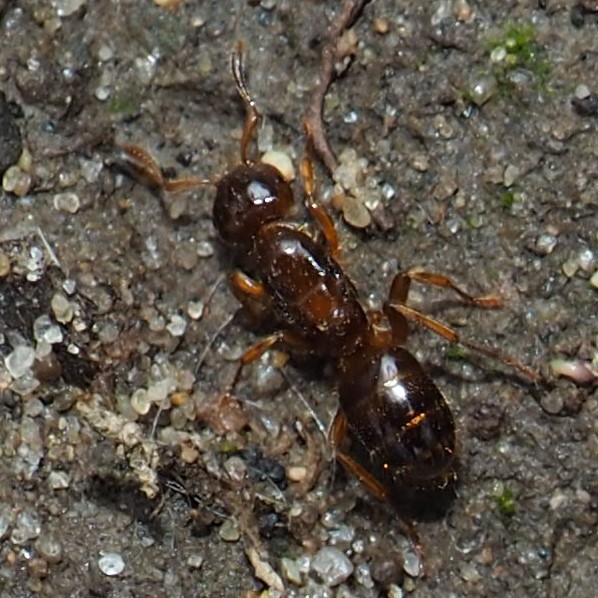
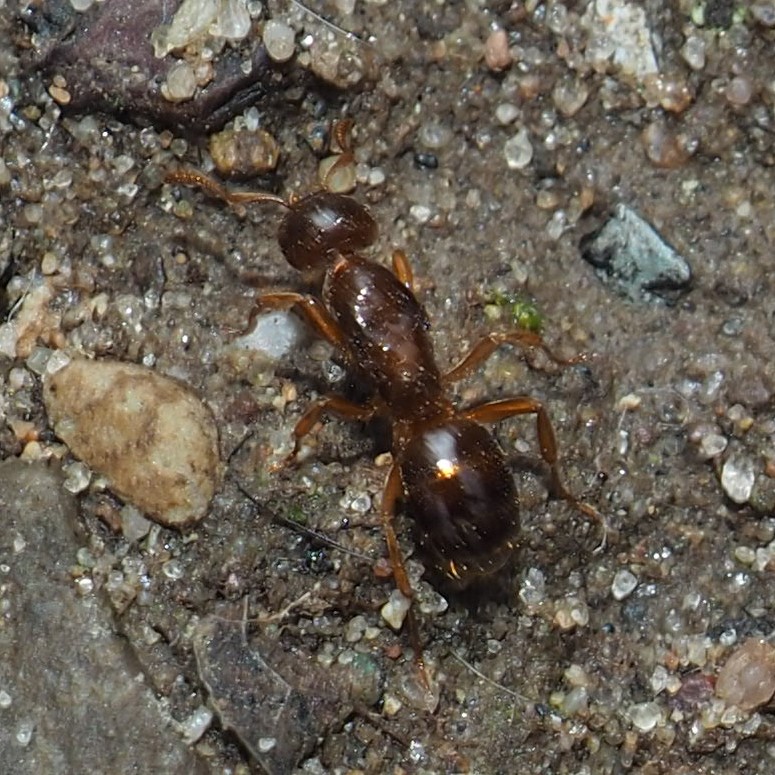
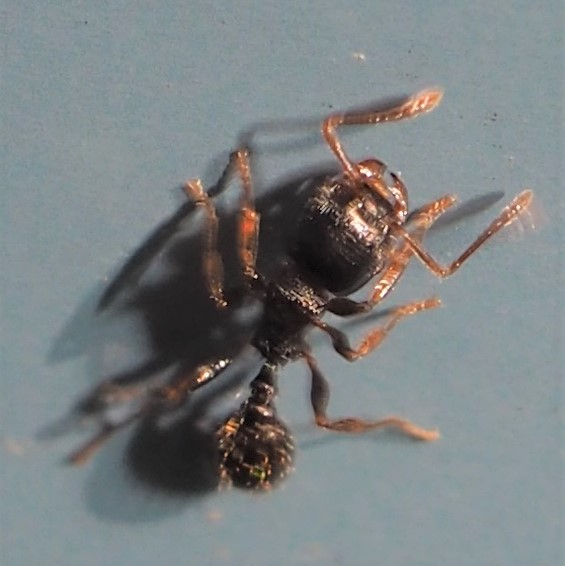
The Barklice are still hiding out from us - if they are up for the season. Here is the dusty spot on the East Wall about four panels from the East-North corner. Unchanged as usual. There were also (or maybe still) a few creatures that look like the skins of a Barklouse that has just hatched, but maybe these are waiting to hatch. Just a guess. I would dearly love to find some of my favorites soon. Third is the accidental nymph that was found at the edge of the photo of a different creature. Shh. Don't tell yourself but as of today I do have some news about the tiny critters!
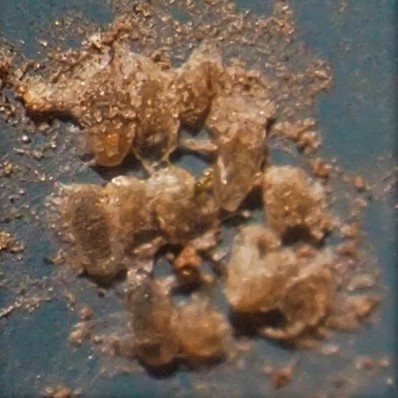
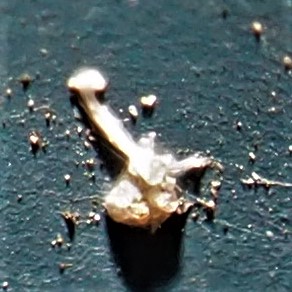
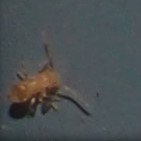
There are still a few Bees, but they mostly don't land on the flowers if I'm around. But there have been a few Beetles. This first one never turned to let me get a really good photo of it. But the second is the faithful Phyllotrex zimmermania, that lovely little beetle with a very recognizable gold pattern on the black rest of it. Third seemed to have flattened itself onto the ground so that I couldn't get a good idea of what it really looks like! (If it really is a Beetle.)
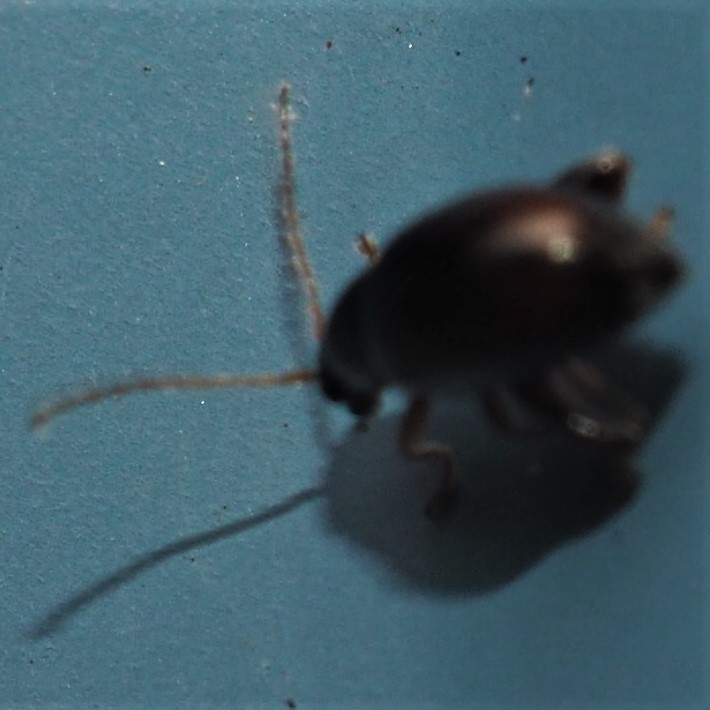
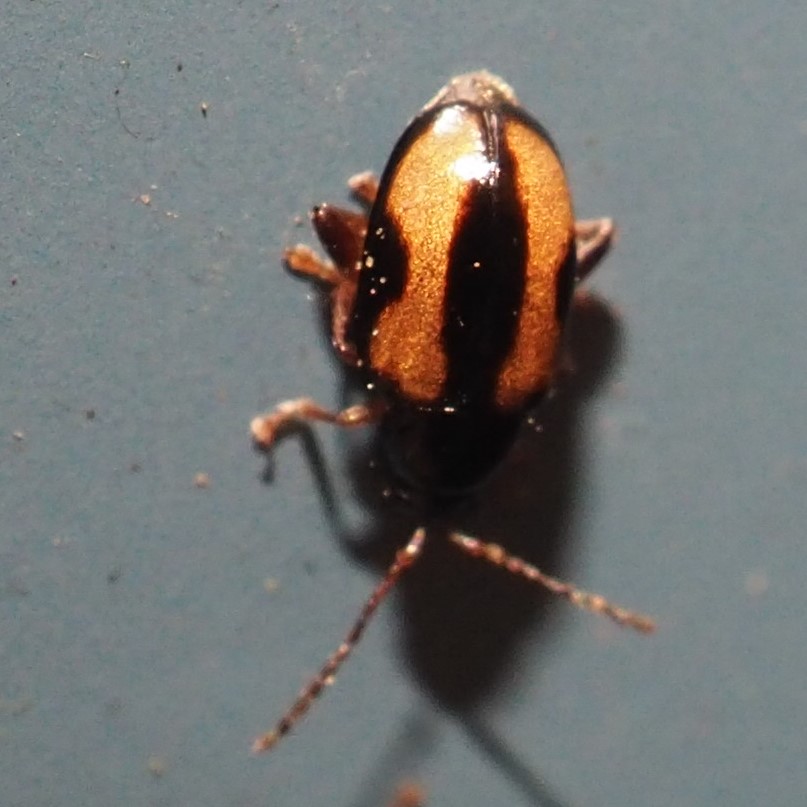
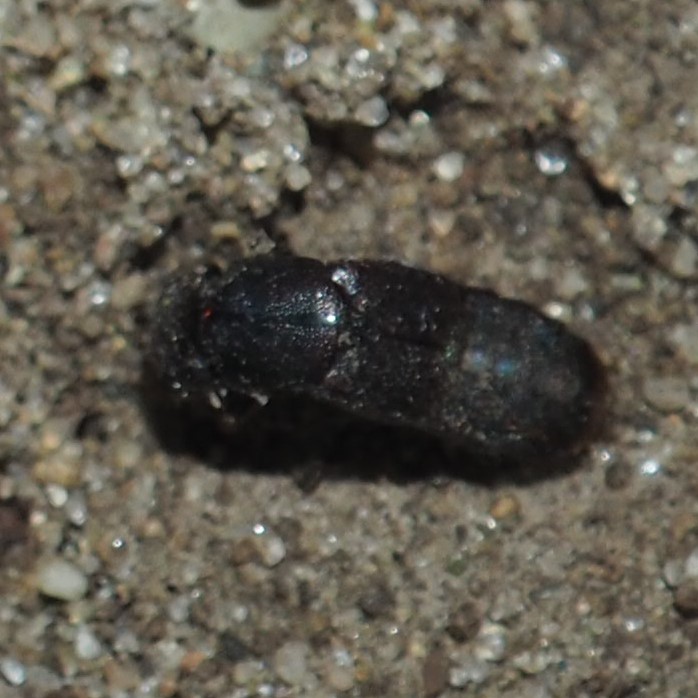
But the Bugs were a bit more forthcoming. Here is the Four-spurred Assassin Bug. (I still haven't seen a Pale-green one yet.) This is the dark-eyed one, Zelus tetracantha. Second is one in its defensive posture.
Third is a White-margined Burrower Bug.
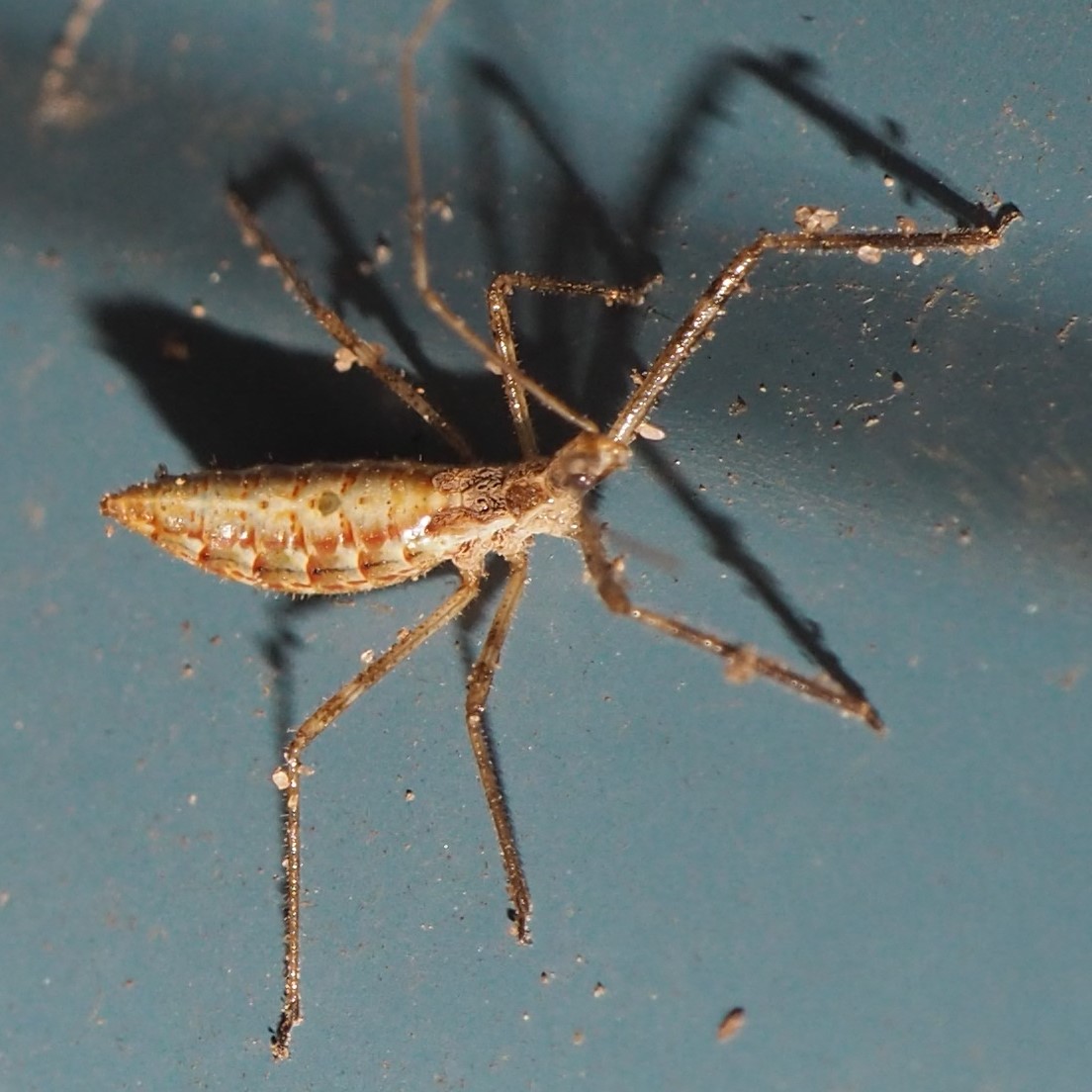
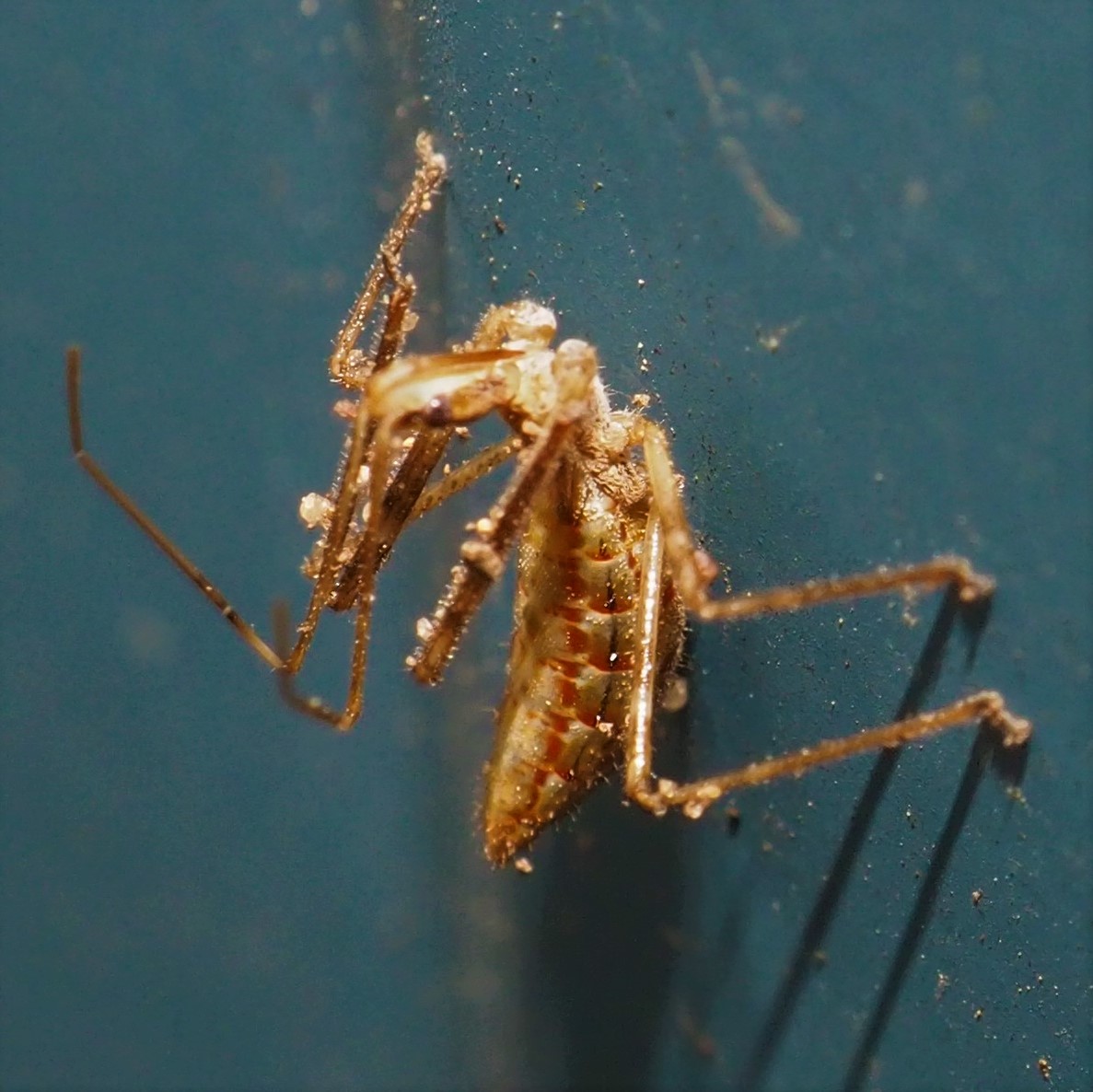
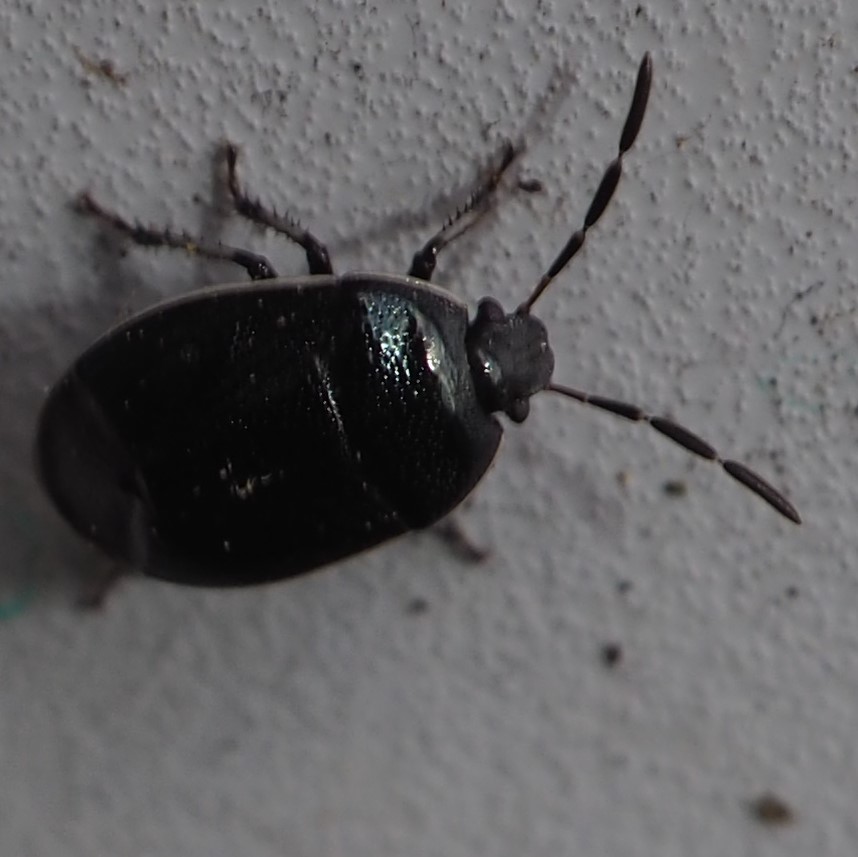
The Leafhoppers were good to us this week. We see Erasmoneura vulnerata (picture 1) fairly often, and also the dotted version of the Eratoneura genus. Same for the Erythridula genus (picture 3).
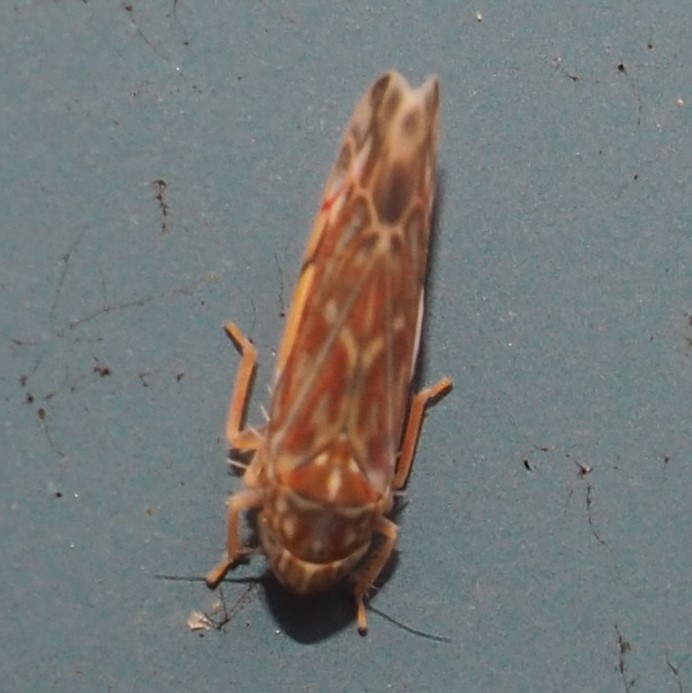
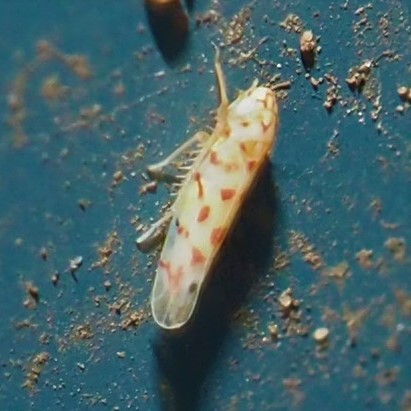
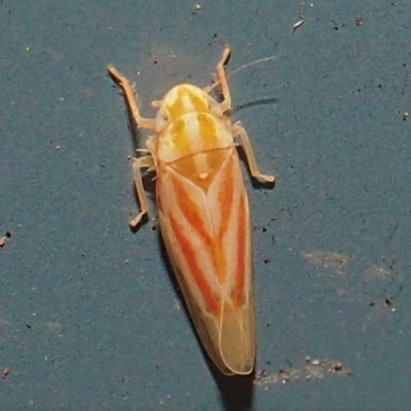
But here is one of the Eratoneura we don't see all the time, E. era. This one almost fooled me because I think of the belt as being much redder than this almost yellow one (picture 1). The second was also a surprise since most of the Erythridula don't have that dark patch. Kyle Kittelberger said it looked like either E. noeva or E. pfrimmeri. It suddenly came to me that I had almost identified one a long time ago as E. pfrimmeri. Since the new picture was so fuzzy, I submitted the old one (from 2018), and Kyle said it was actually E. noeva, not E. pfrimmeri.
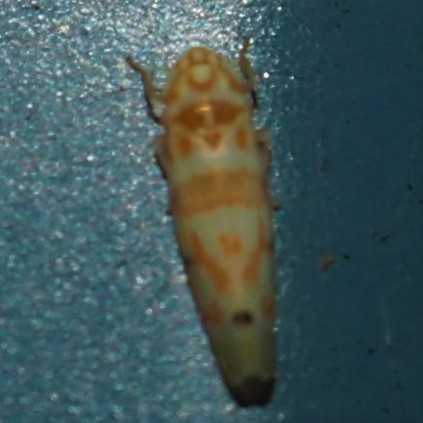
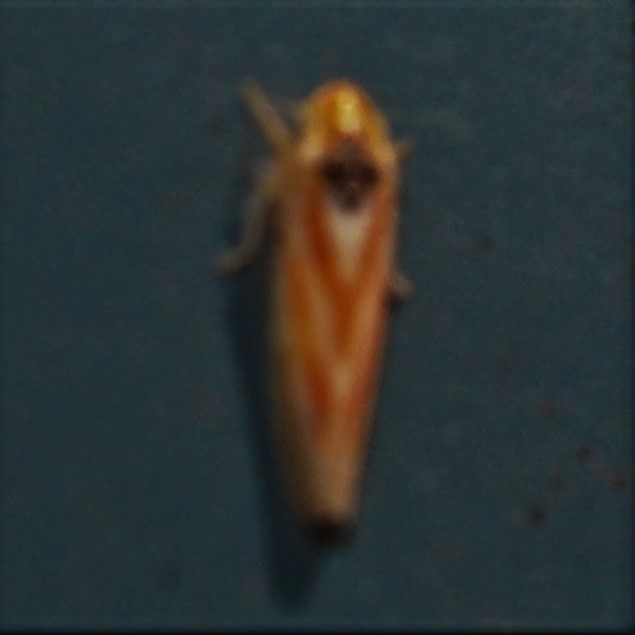
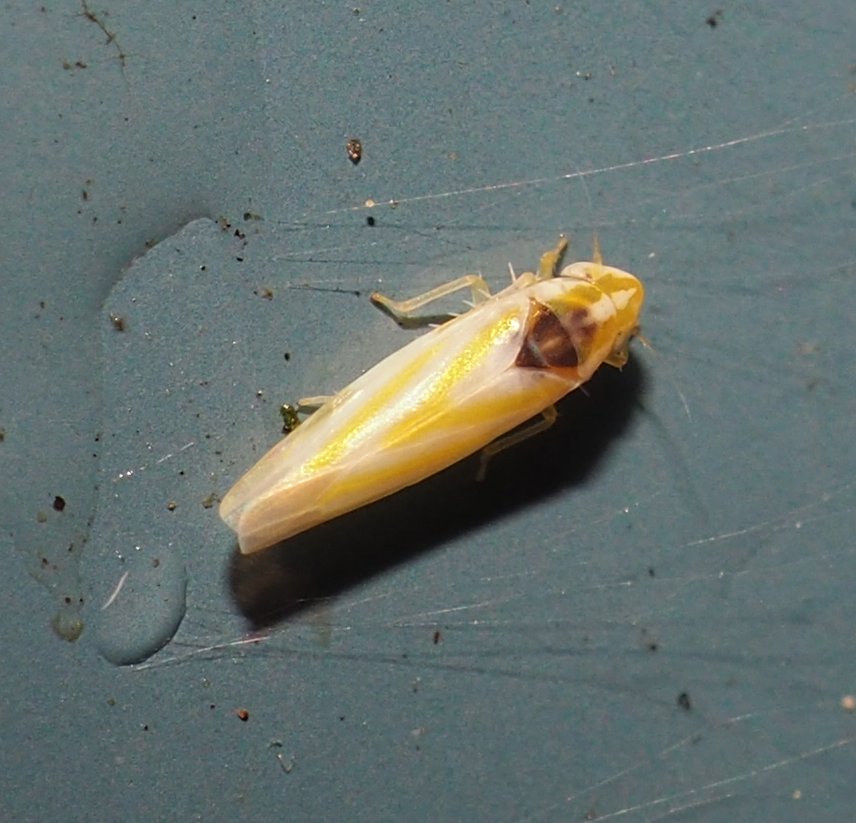
This morning the Fishes were congregated in the deepest darkest end of the pool. The lighting was pretty interesting. But I find myself looking everywhere for a trace of Froggy. I'm just not sure what happened to him.

We had a pretty good catch of Flies this week. Trina Roberts in iNat showed me (almost) how to identify some of the Flies. (Zachary Dankowicz had to finish the job.) These first two turned out to be Anthomyia oculifera, one of the Root-maggot Flies, and female. The third is in the same genus, Anthomyia, and male.
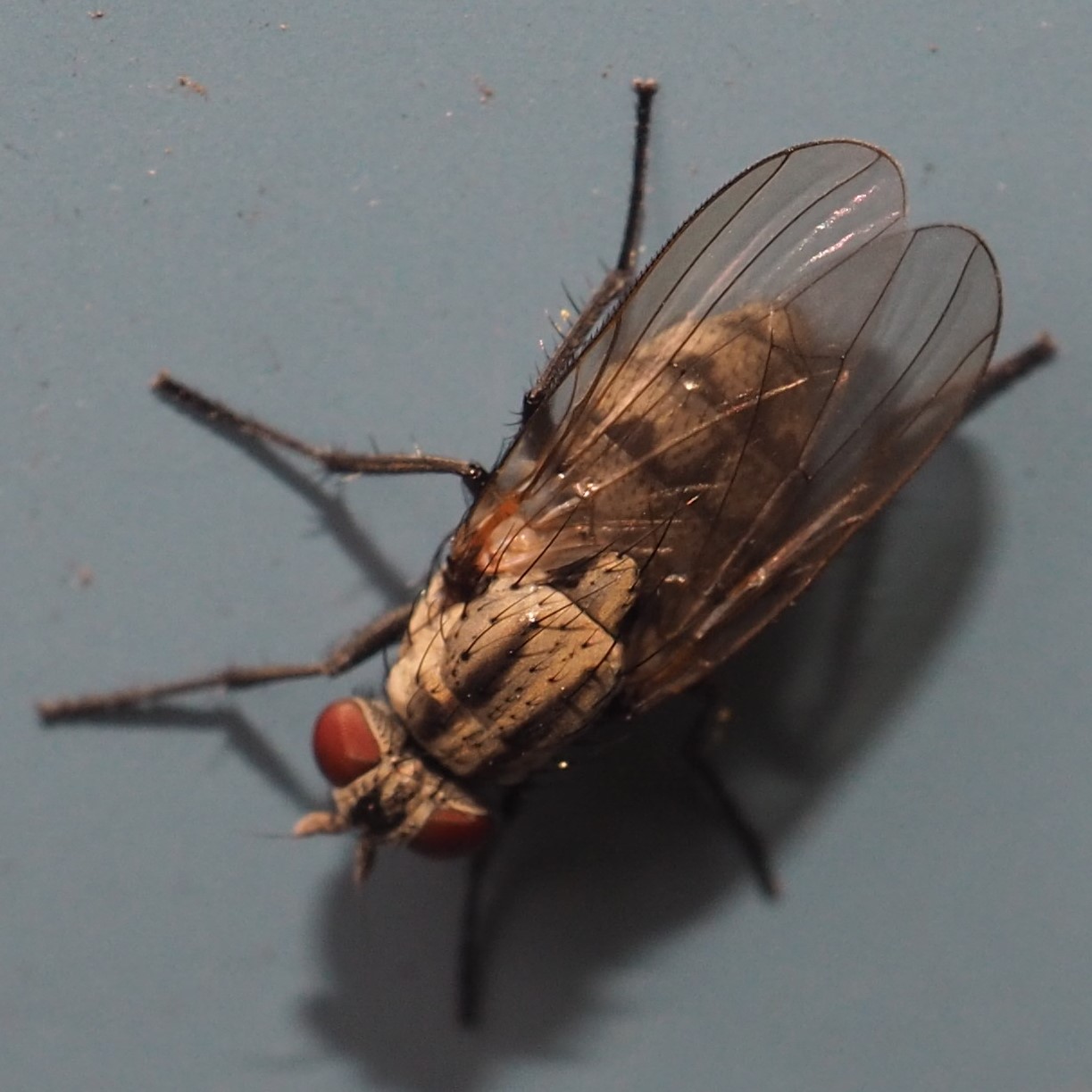
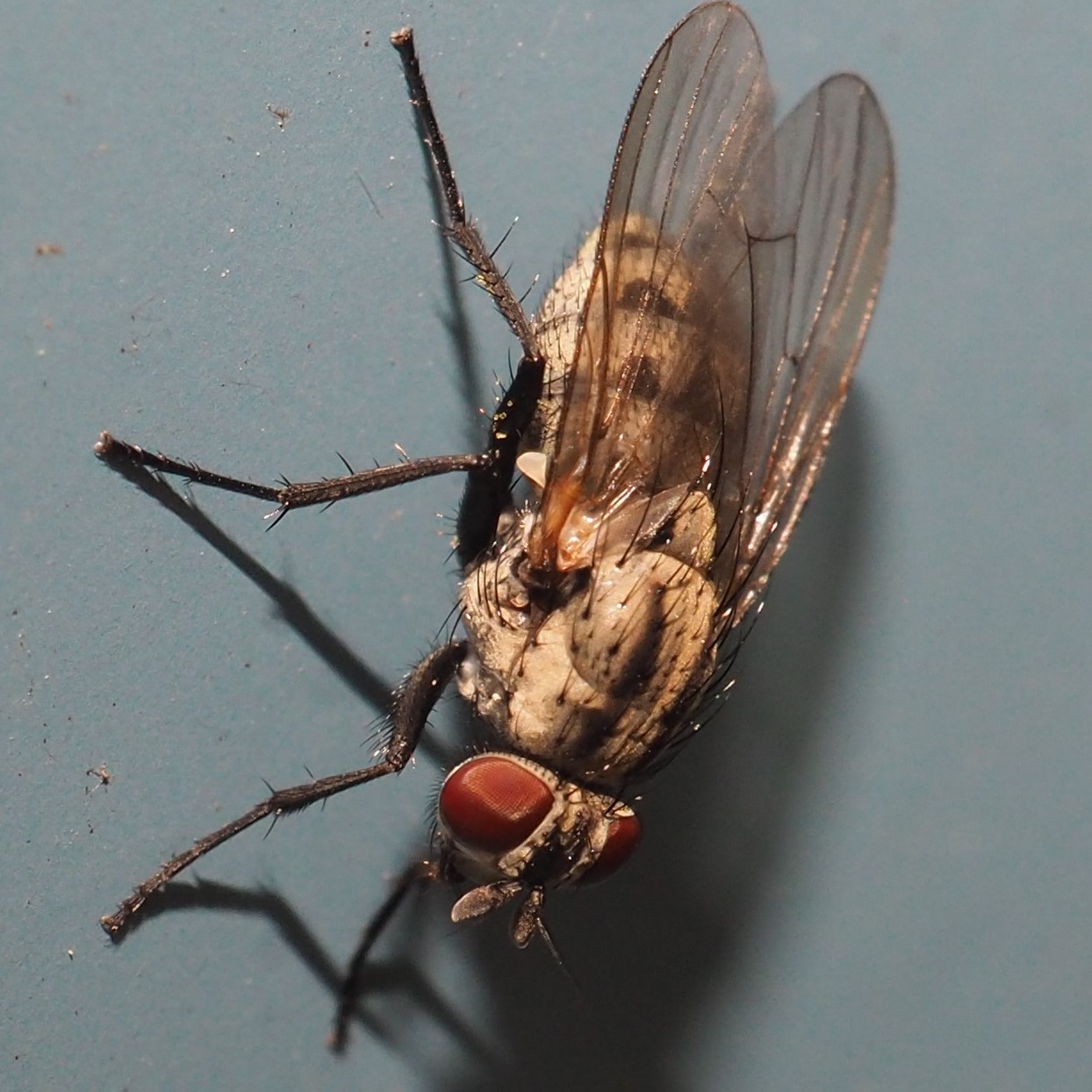
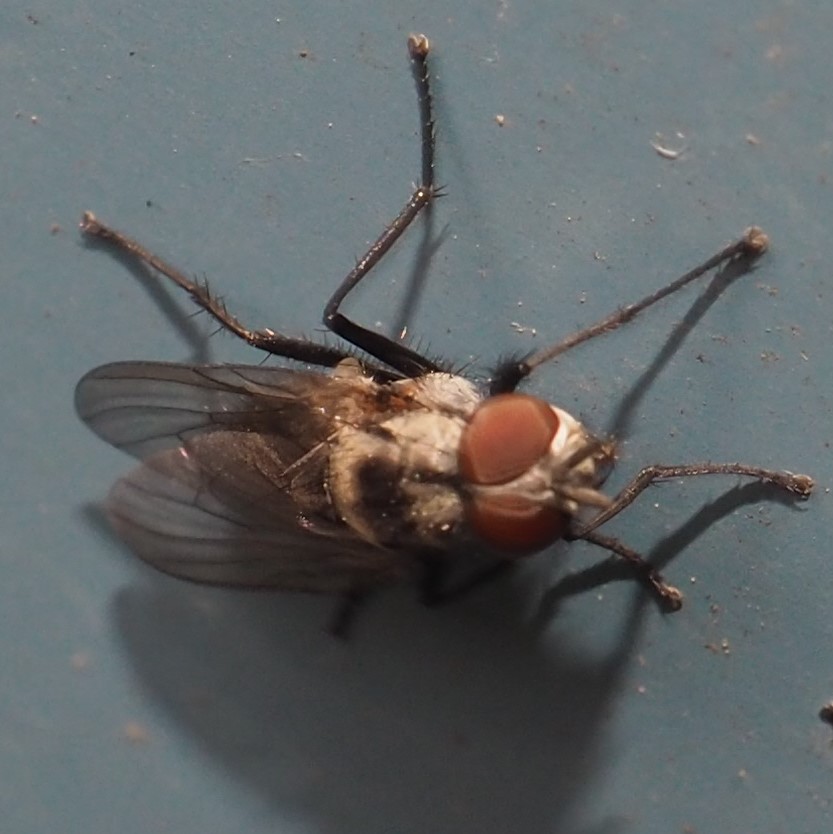
Here's a largish Crane Fly (subfamily Tipulinae). Then one of the Fungus Gnats. Third is one that I'm not sure I know - I was thinking Blue (or Green) Bottle when I labeled it Blue Bottom.
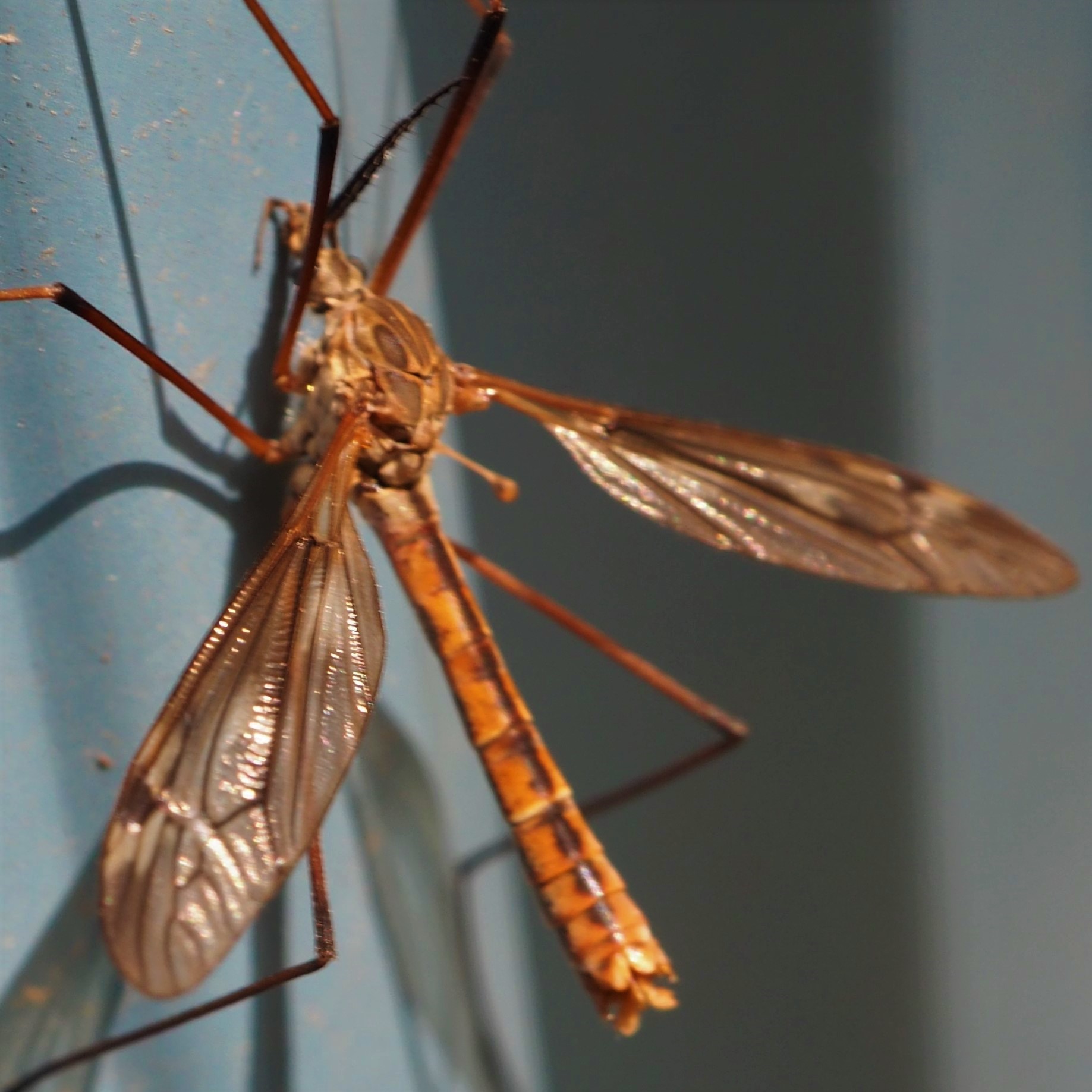
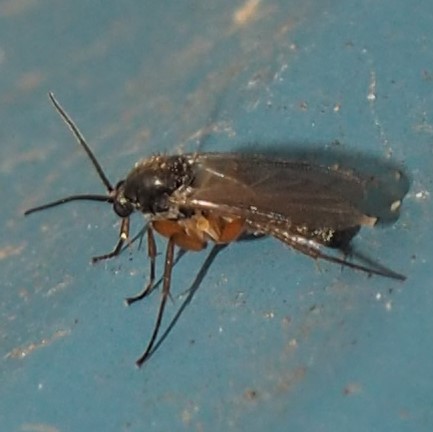
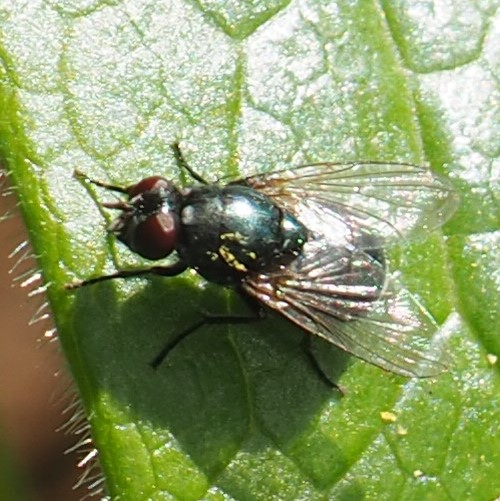
First up here, a Non-biting Midge. We had a few of those. Remember this one is a male because of its fluffy antennae! Next is a little Gall Midge. There were quite a lot of ones shaped like number 3.
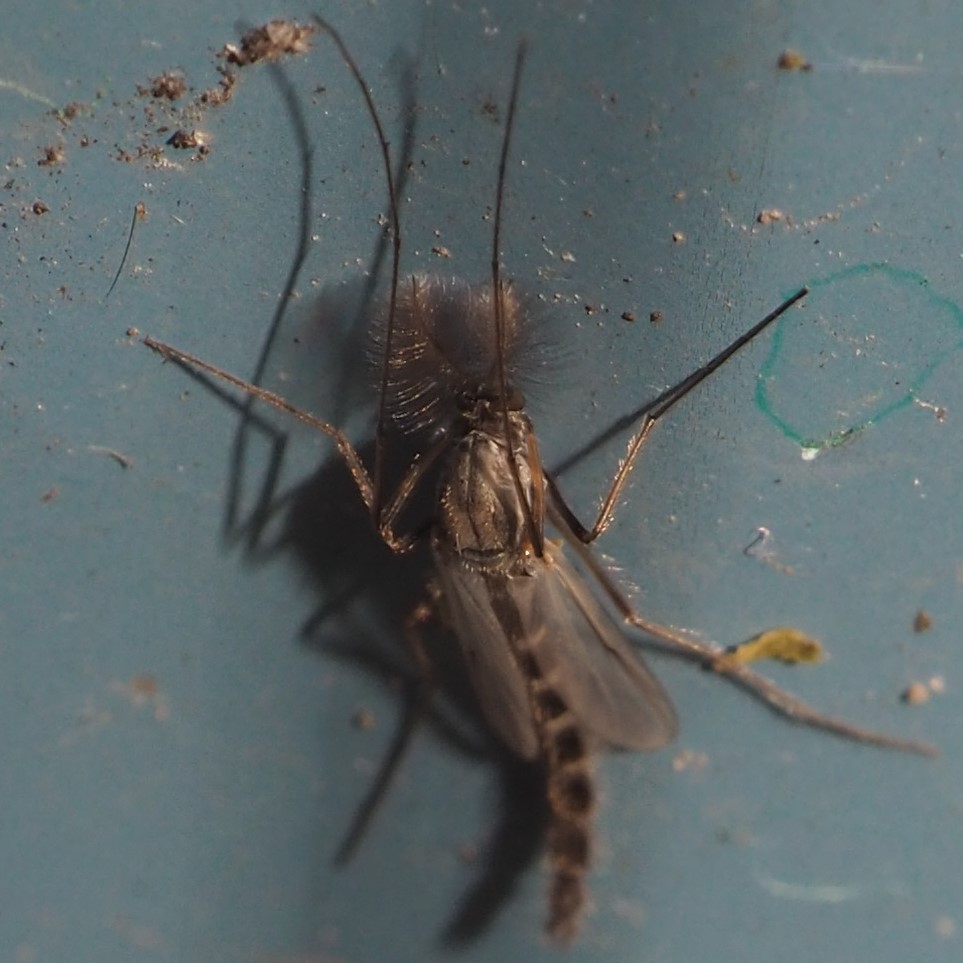
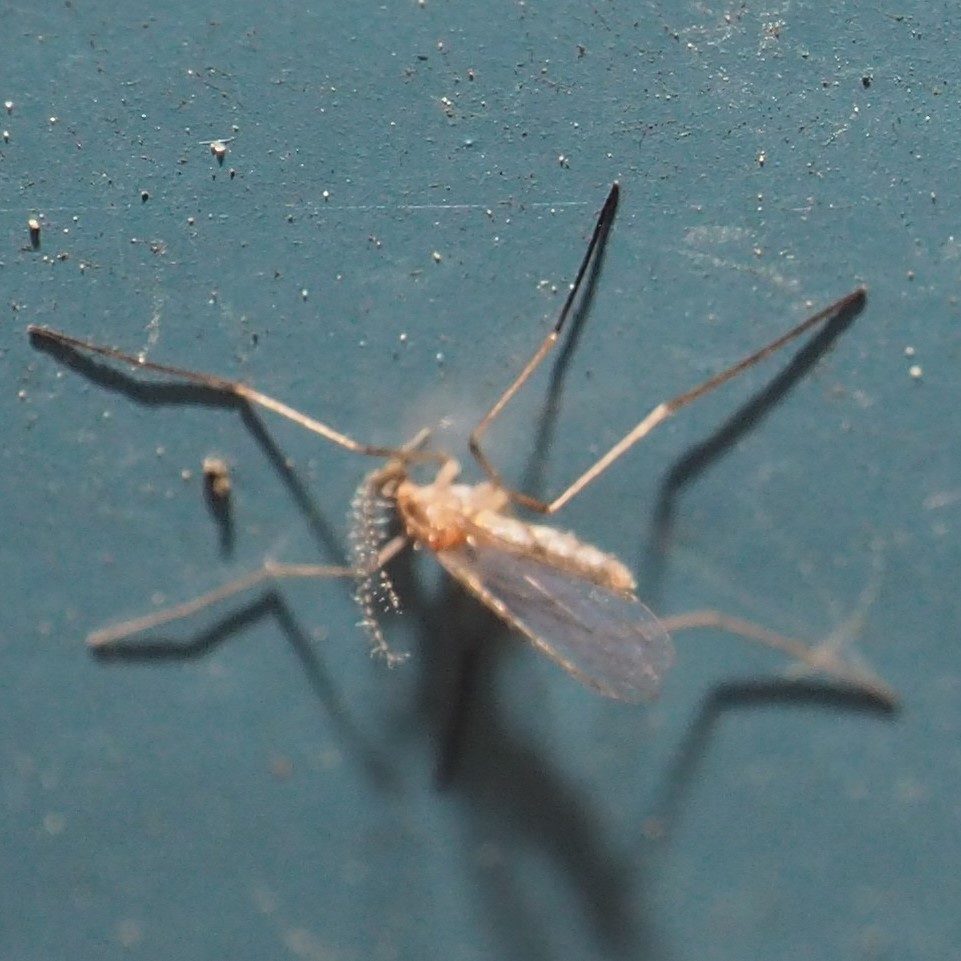
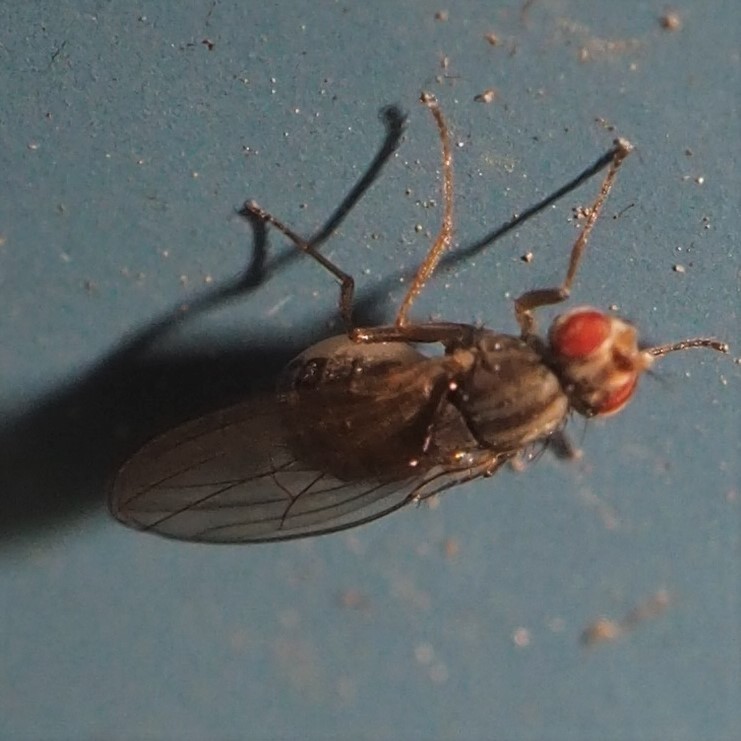
I'm going to try to psych out this next one. It looks like an identifiable Fly. I've no clue on picture 2. Nor on picture 3.
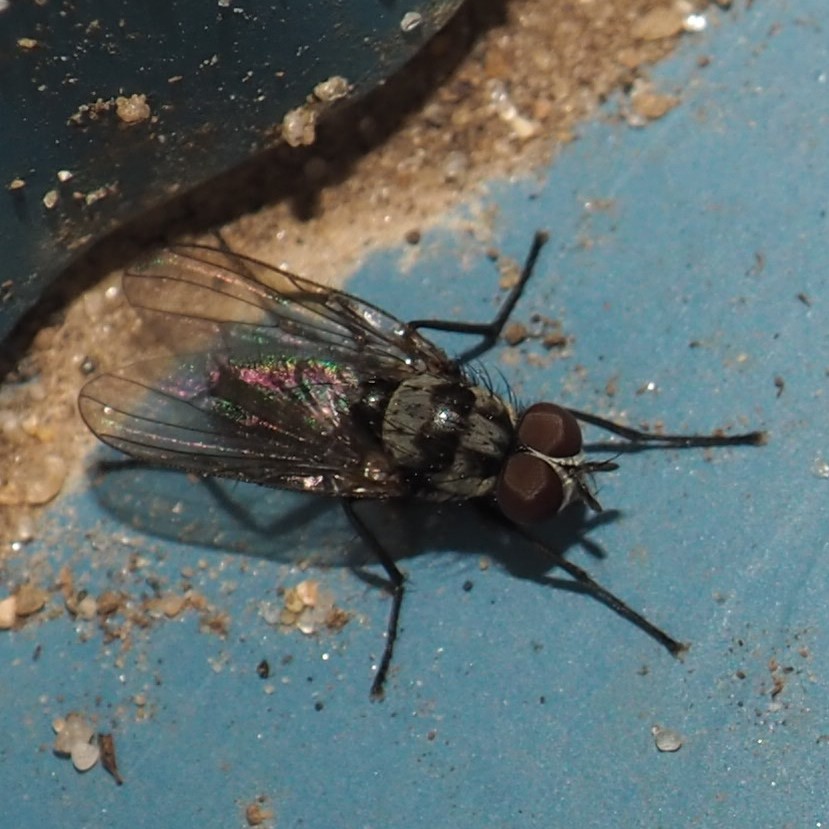
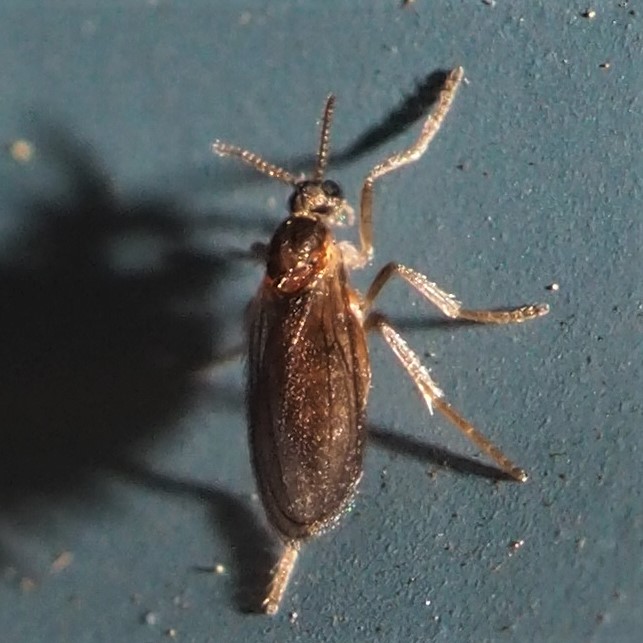
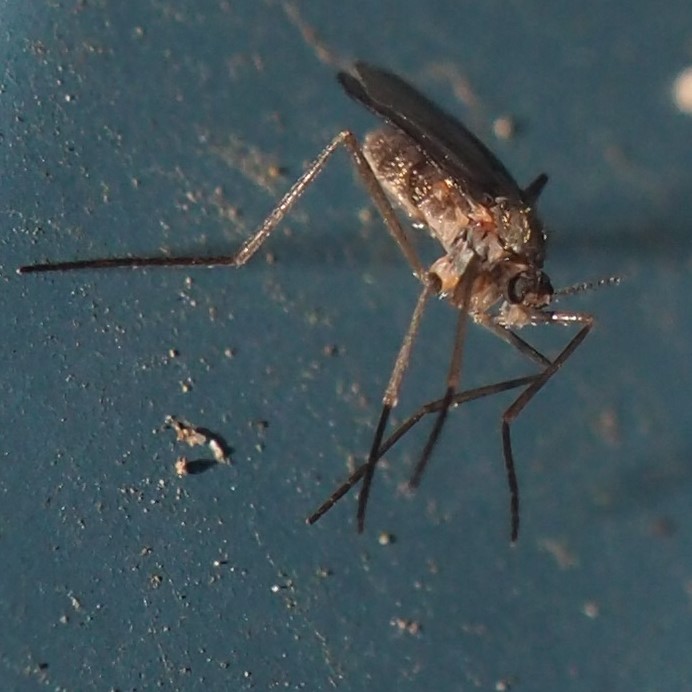
Here's one larger Fly. And one tiny one, but colorful, trying to hide in the cracks. It even (picture 3) seems to be trying to hide its face with its hand.

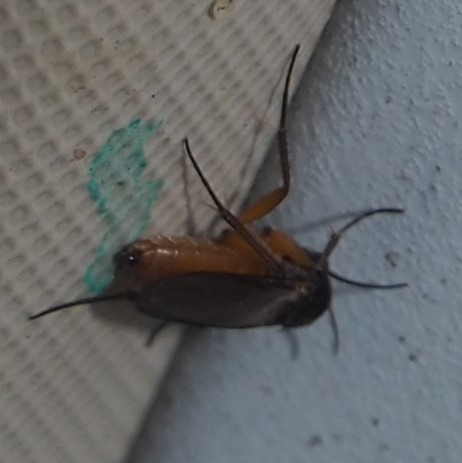
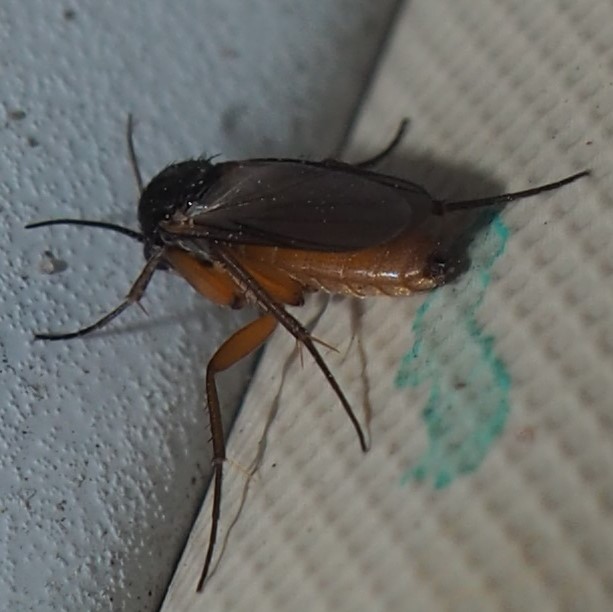
There were a few Flies on the rocks around the pond. The first one seems to be acting as a sanitation engineer. The second might be a Hover Fly but it was so far away that I'm working from a tiny picture with almost no detail. If it is, I'll put my money on Helophilus fasciatus, the Narrow-headed Marsh Fly. Last is a pretty fly but I don't know what it is. I know this is very tentative but I am not a big expert on Flies! But I'm trying!

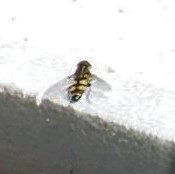
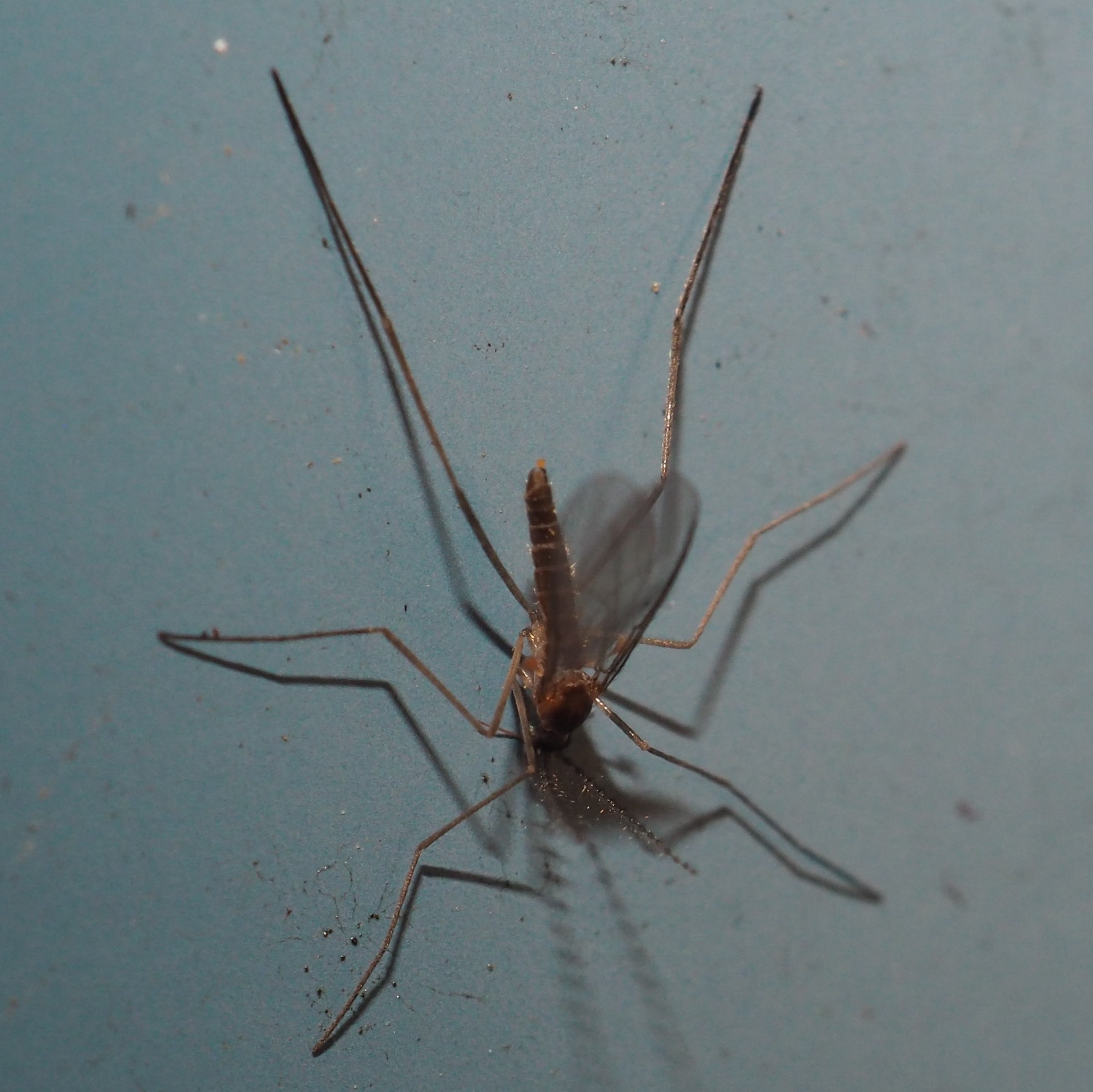
Here's another Fly I'm going to work on this week.
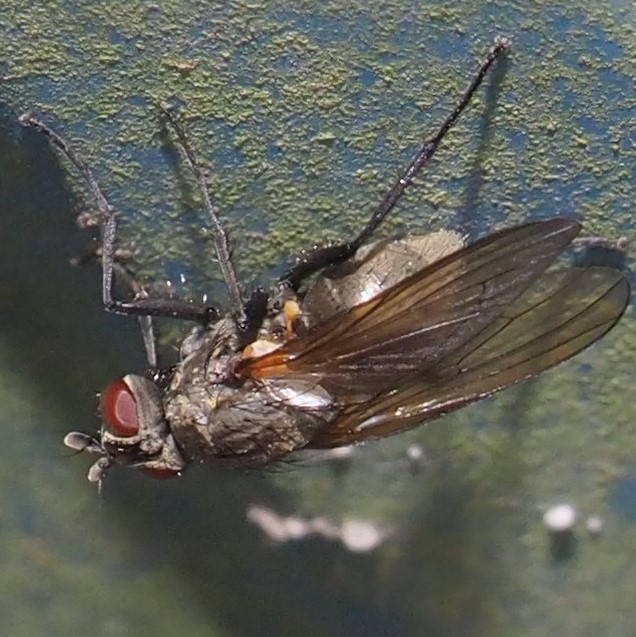
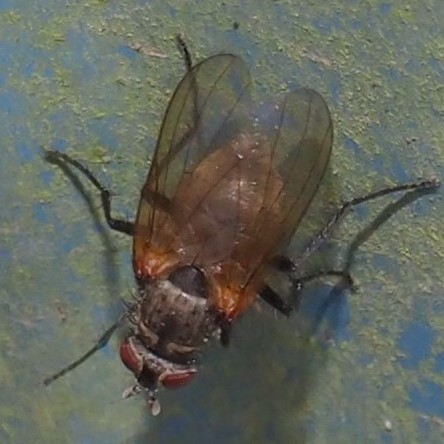
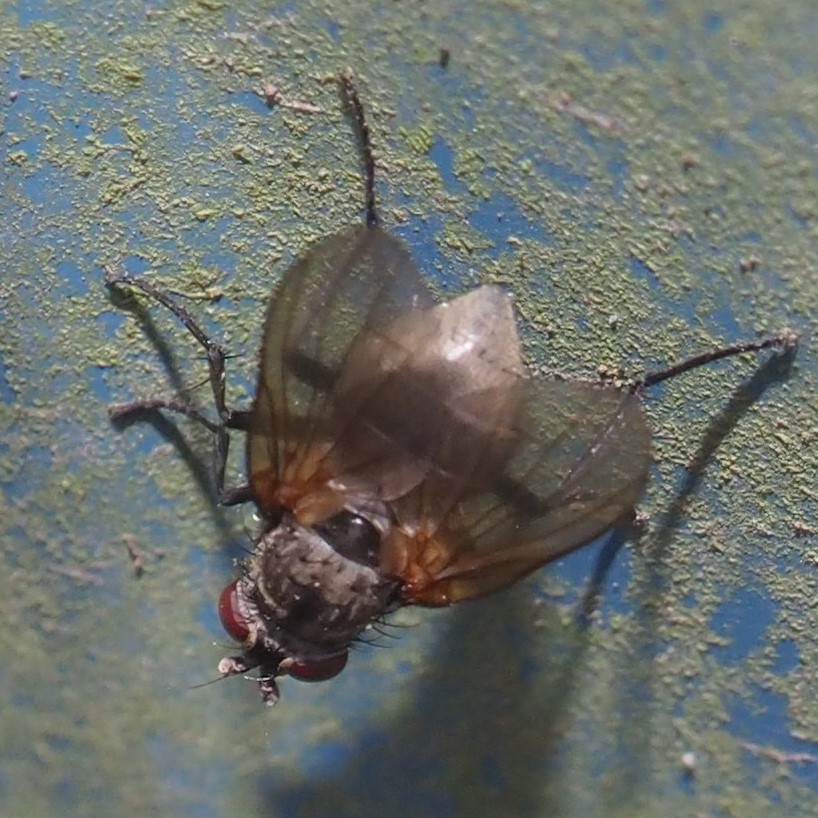
We had another of those little Leaf-miner Moths. I don't know its name - but I recognize it from before. Picture 1 shows one kind four days ago. Today (picture 2) a different individual seems to have found a friend. I can't tell which is the girl and which is the boy. Picture 3 is our friend alone again.
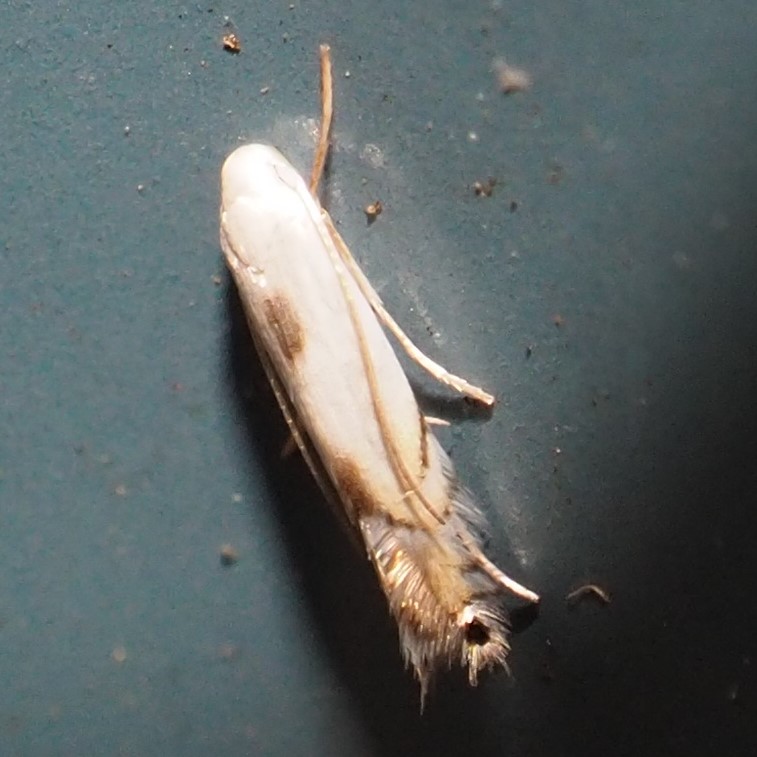
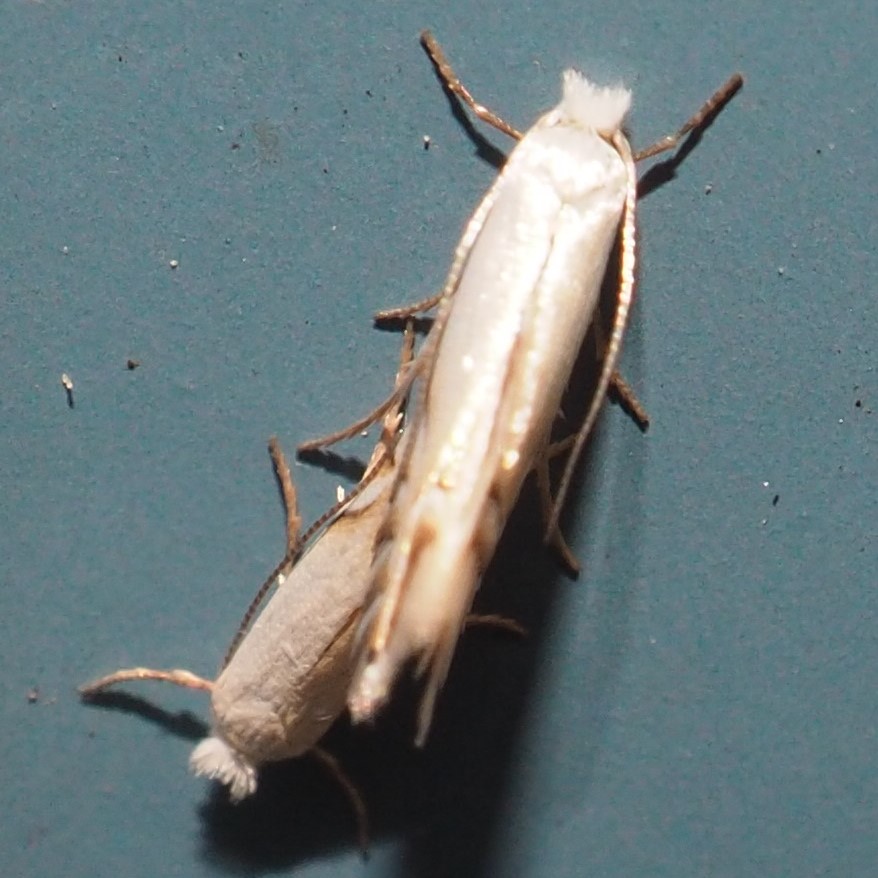
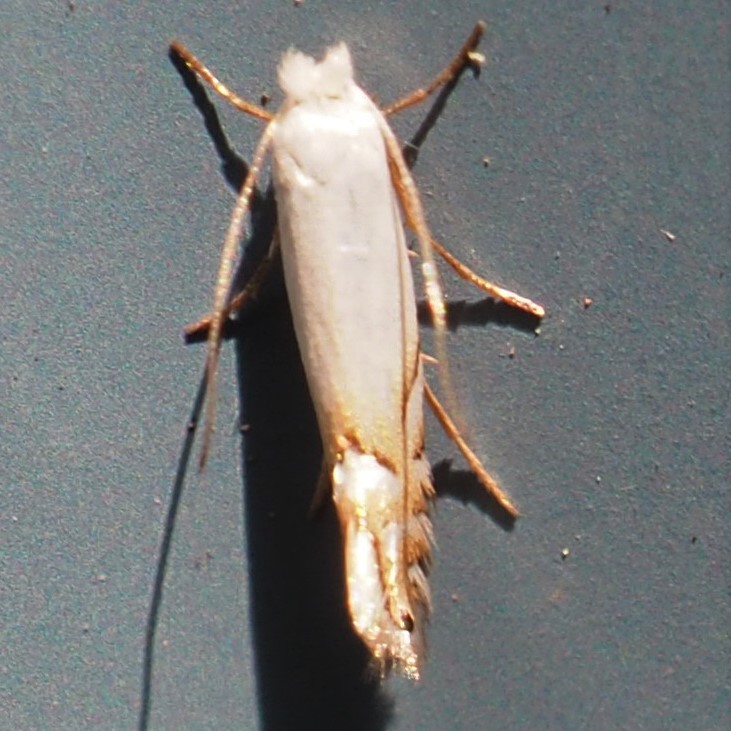
Speaking of Moths, here is a lovely little Tiger Moth sent in from Bathurst in the Eastern Cape, South Africa by Biddy Greene of Capetown. Her moth is one of those whose colorful underwings are usually covered up by the upper wings. She also sent in the ventral view (upside-down view in this case). The two pictures together were identified by Bob Borth of Wisconsin, who is a lover of South African lepidoptera!
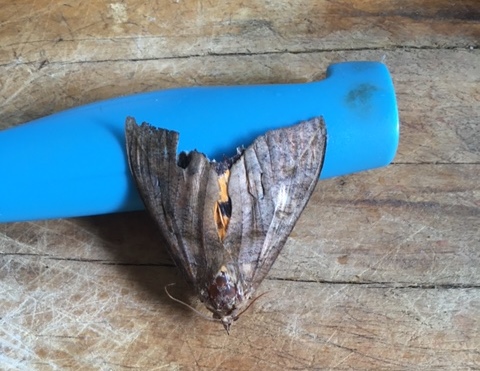

Let's take a Flower Stroll. In fact, let's first sneak around over in my neighbor Deb's yard. She and Dave planted this beautiful Rhododendron years ago and it keeps getting more and more glorious. Picture 2 was taken from the edge of the driveway so the Rhodie looks more spread out.


Across Deb's yard, next to MY driveway, is a more and more magnificent Weeping Cherry Tree.


Now you're over in my yard. The Japonica is blooming full blast. Some people who can see my yard, which I can't when I'm indoors, say they have seen Orioles on it. Orioles are well-known to love bright orange! Walk back toward the front yard, and you will see the most understated bulb garden in the known world.
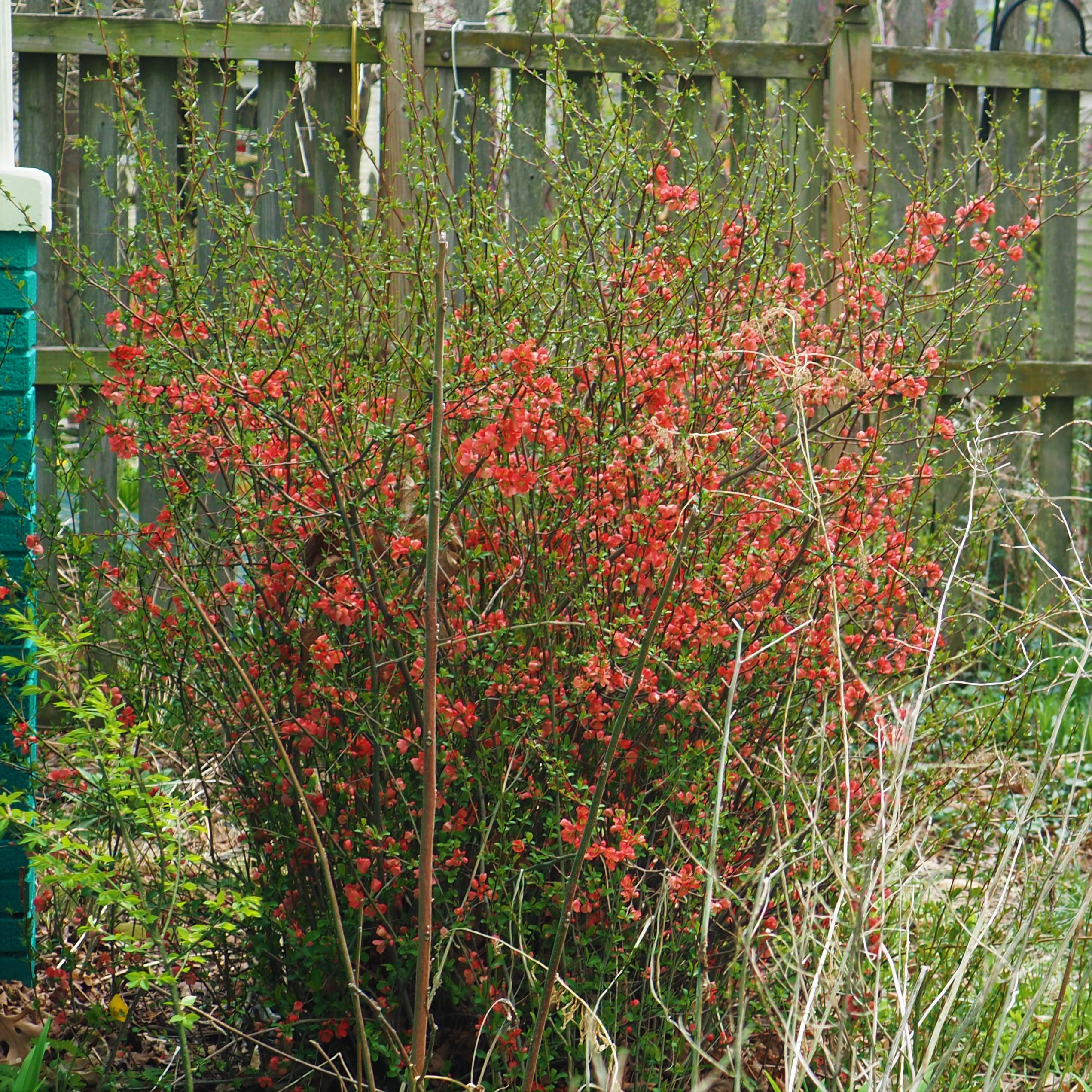
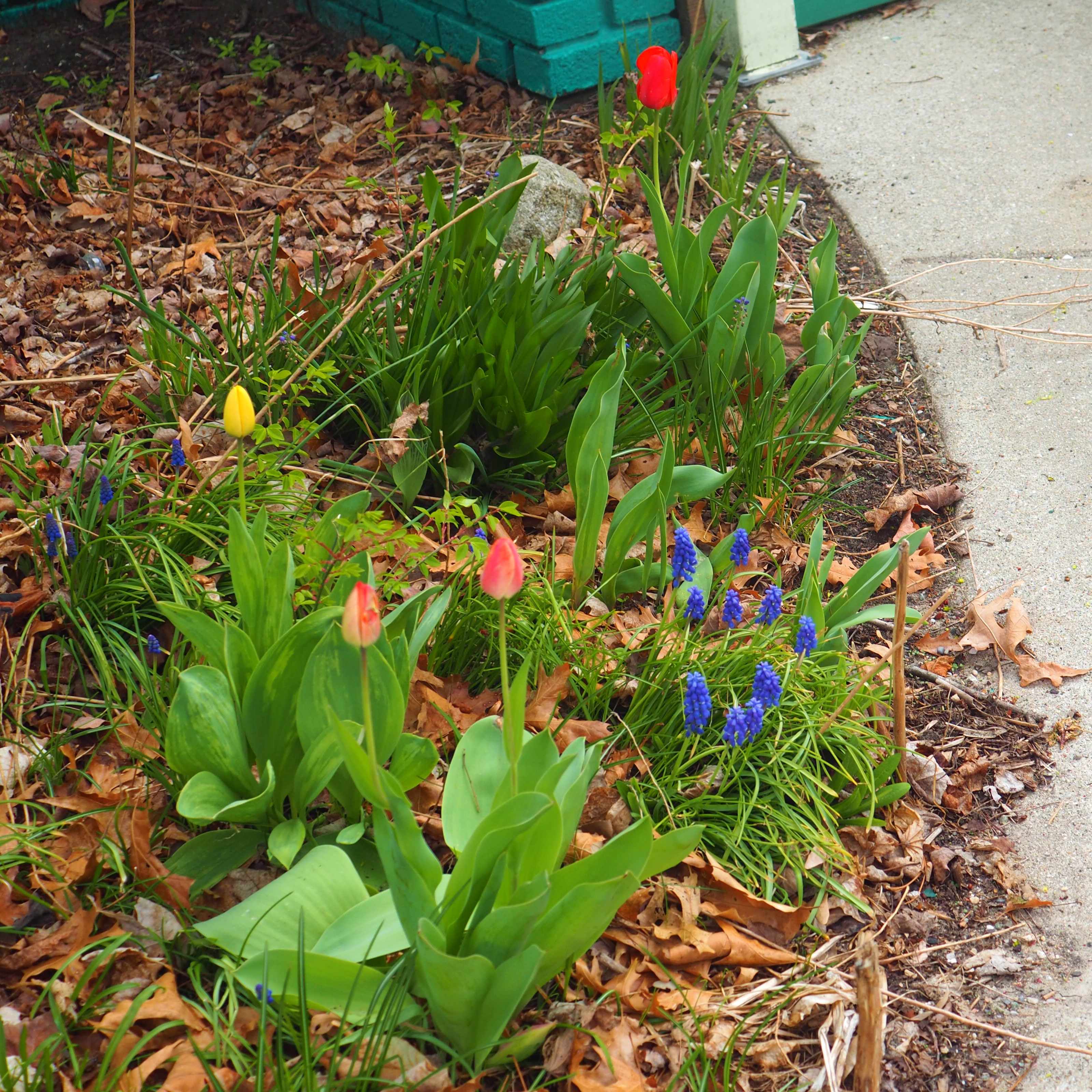
Oh! I meant to show you the Grape Hyacinth and Pulmonaria bed in the back yard. You'll notice that the flowers on the Pulmonaria are now almost all blue. The Celandine Poppies have made nice big mounds.
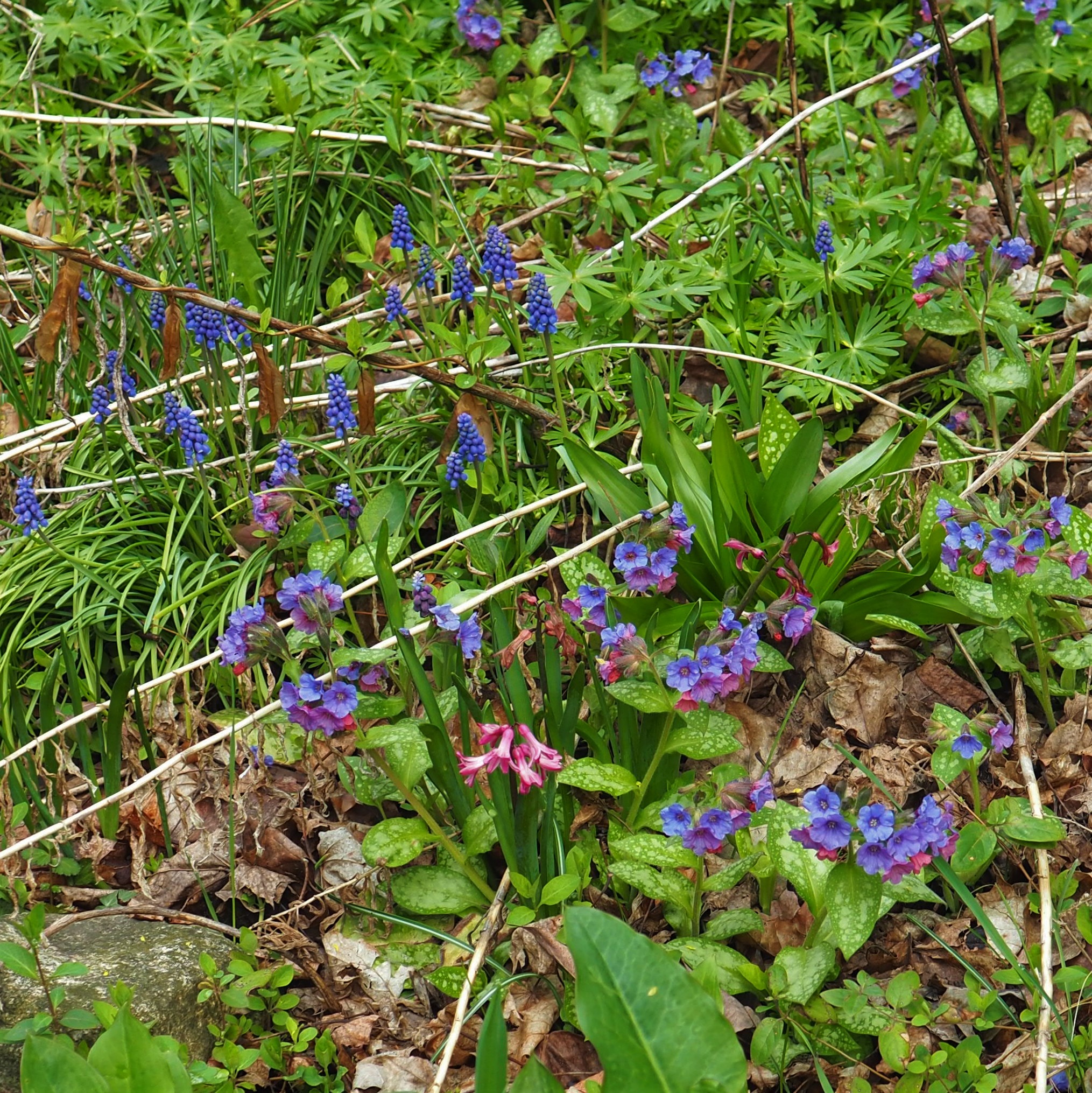
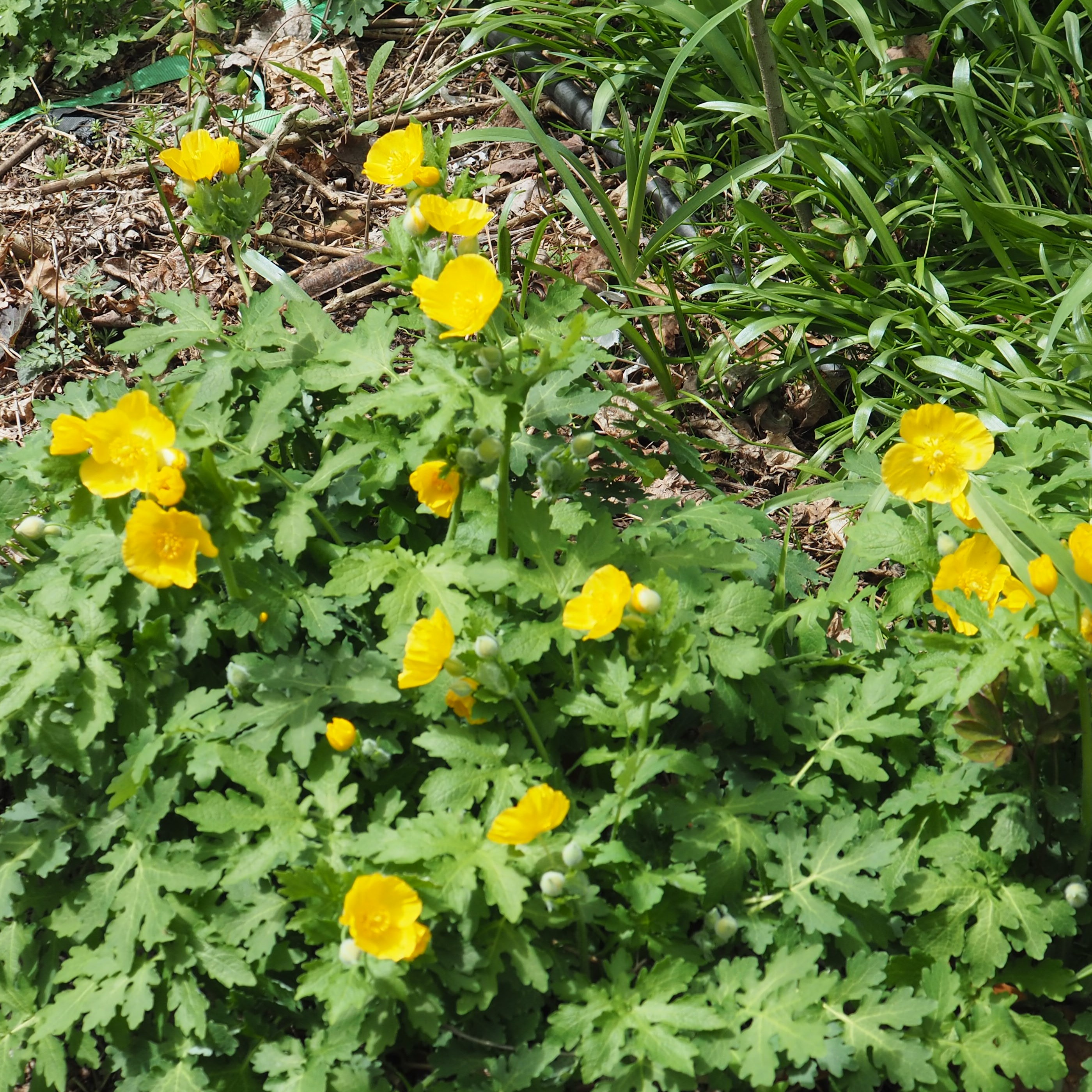
Several of the Primroses have begun to bloom. Later we'll see them blooming en masse.
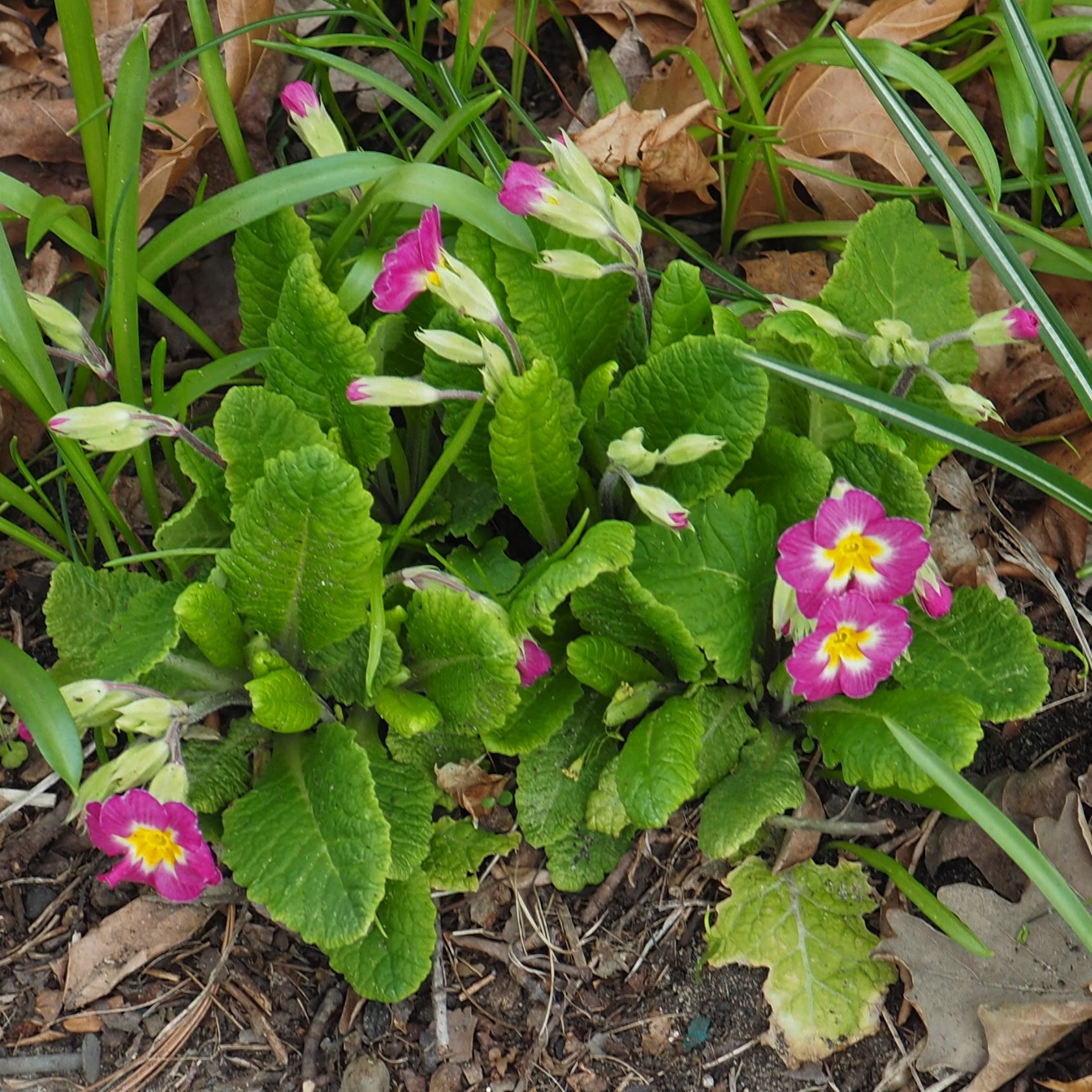
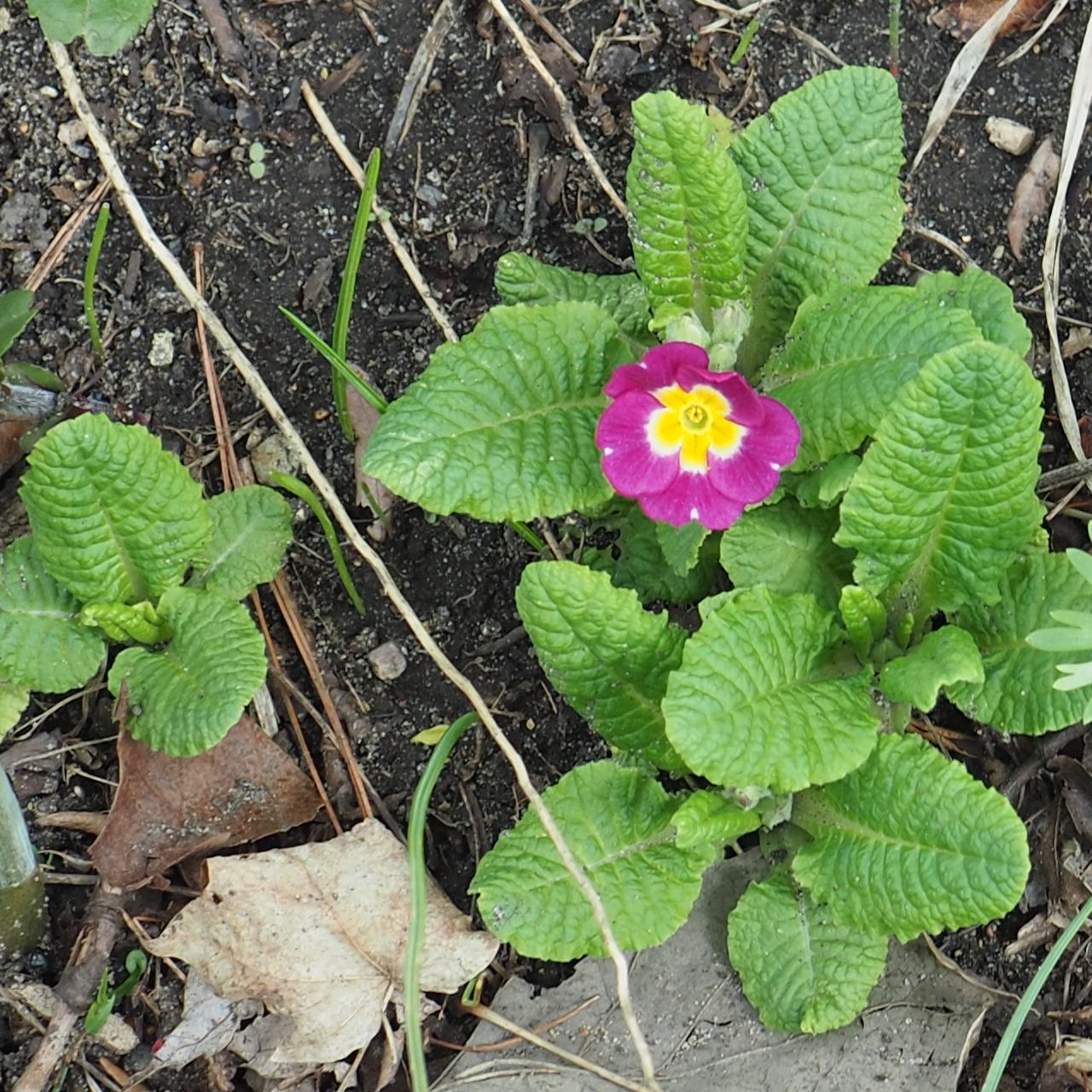
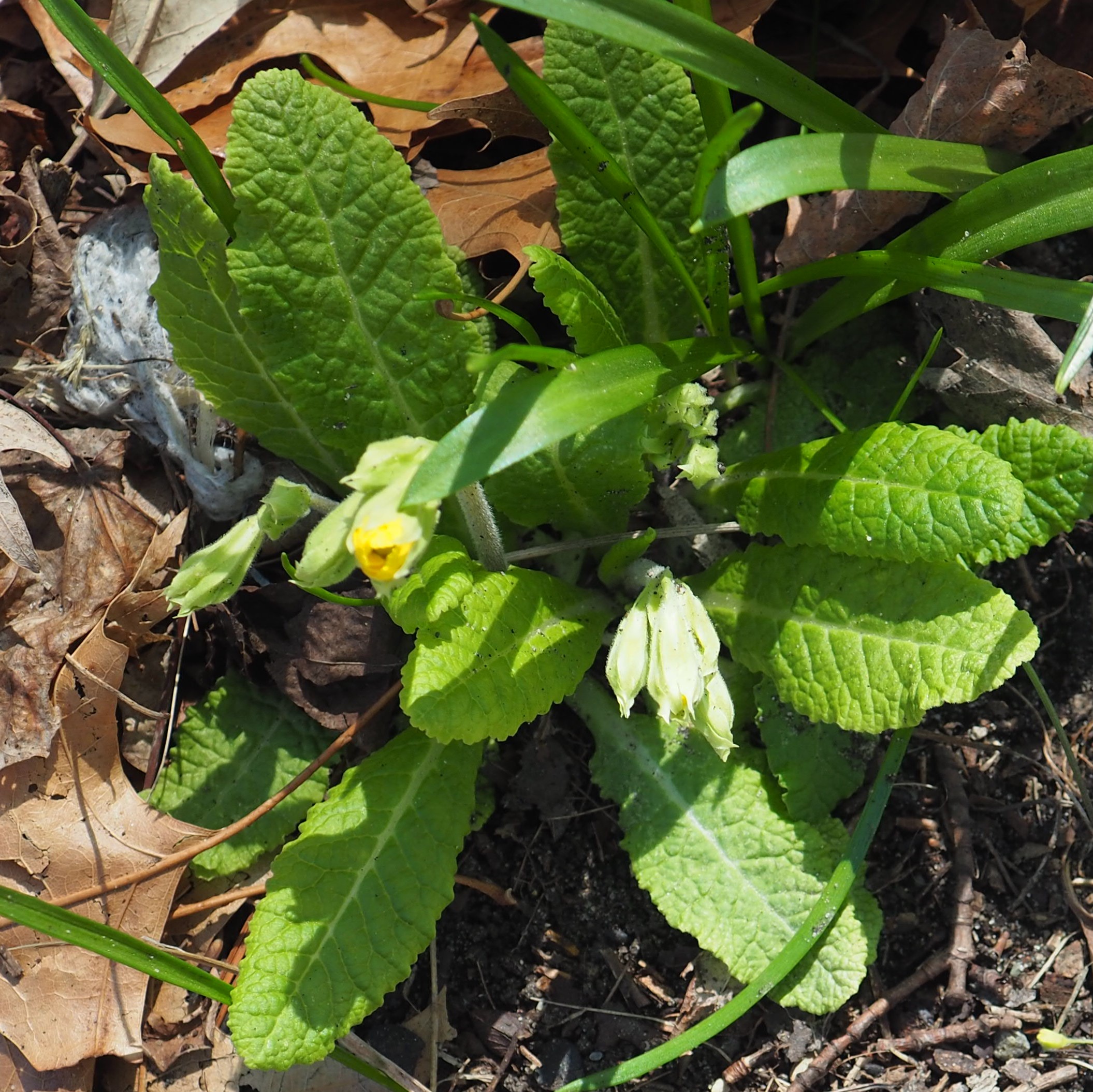
The little wild flowers are also coming along. Here are the White and Purple Violets and the Blue ones too. Then here is the first little batch of Forget-me-nots. Soon they will be lining the paths.
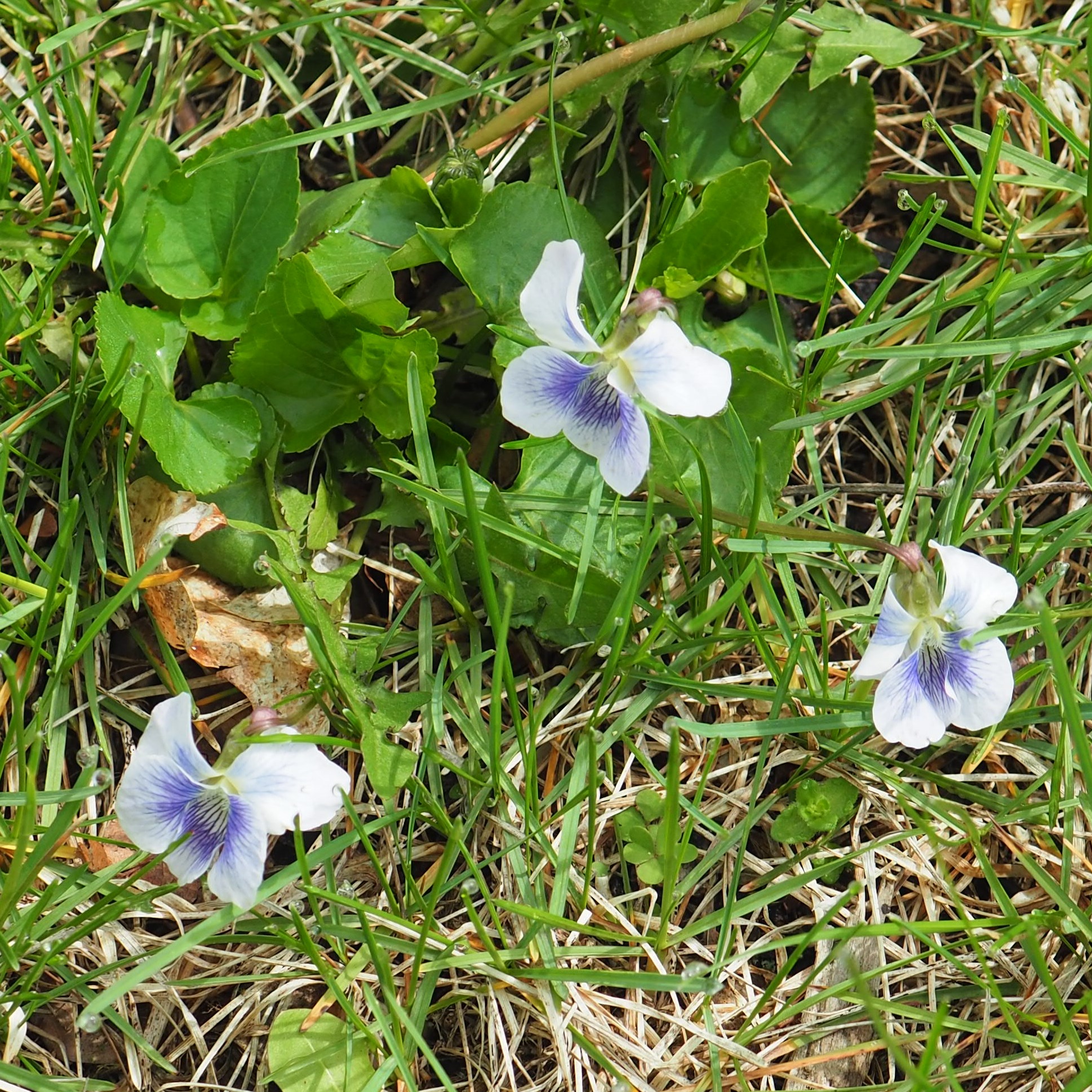
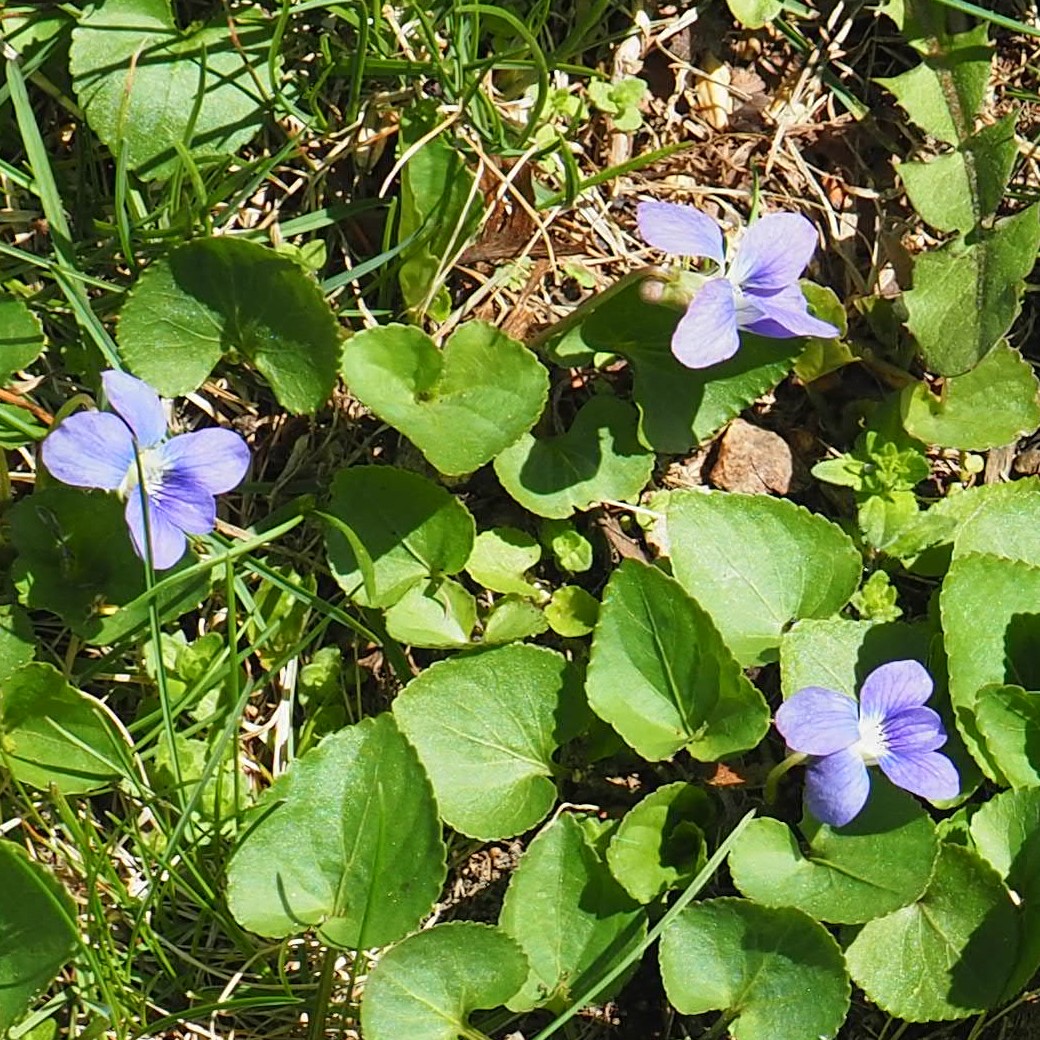
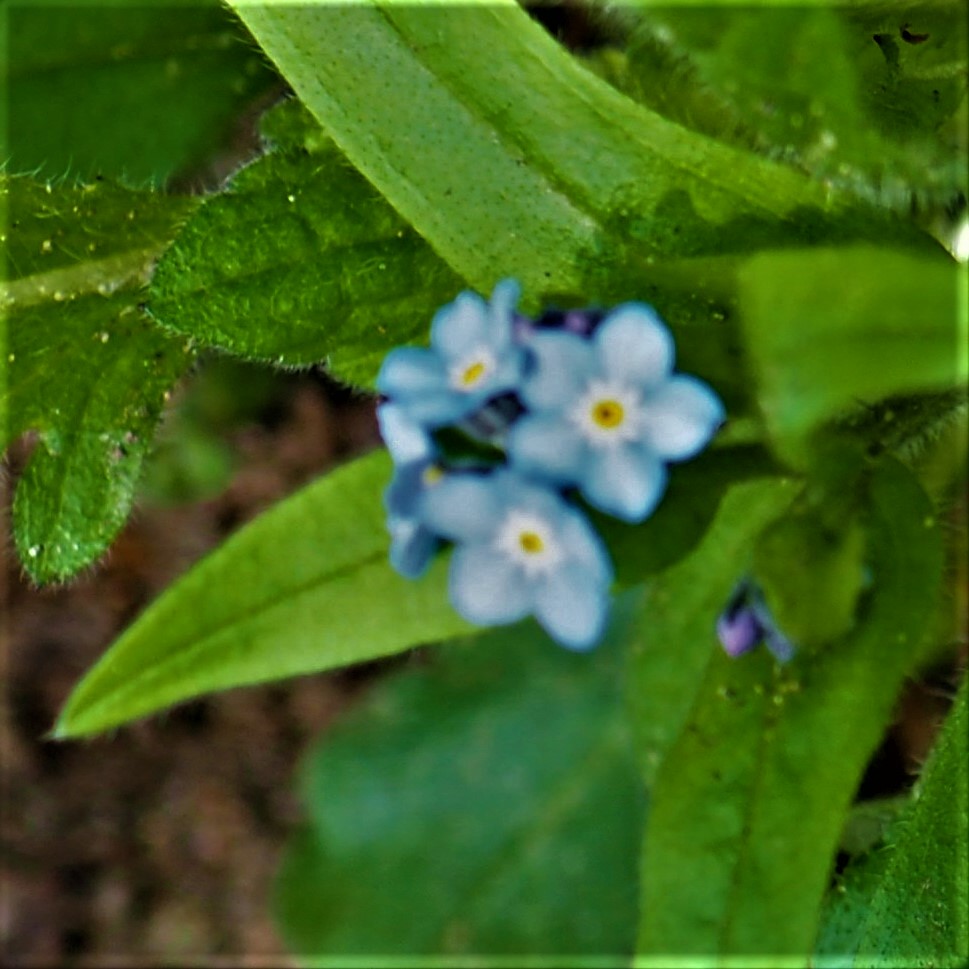
We had a good display of Spiders. Almost all our spiders were large Crab Spiders. But we had a few exceptions. Here is an unidentified Cobweb Spider that we've been following for more than a month, and a Common House Spider. Third is a Garden Ghost Spider, which was washing its hands at my sink this morning at 1:00 am..

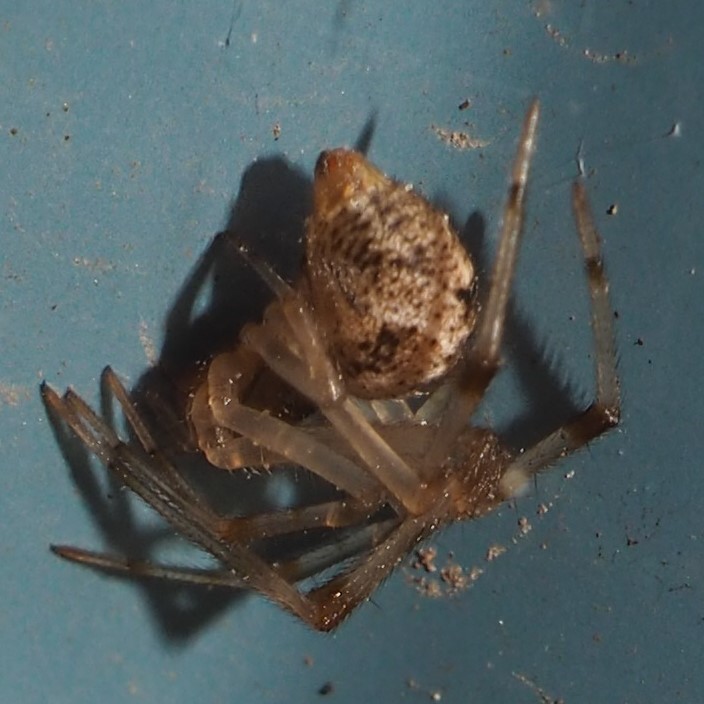
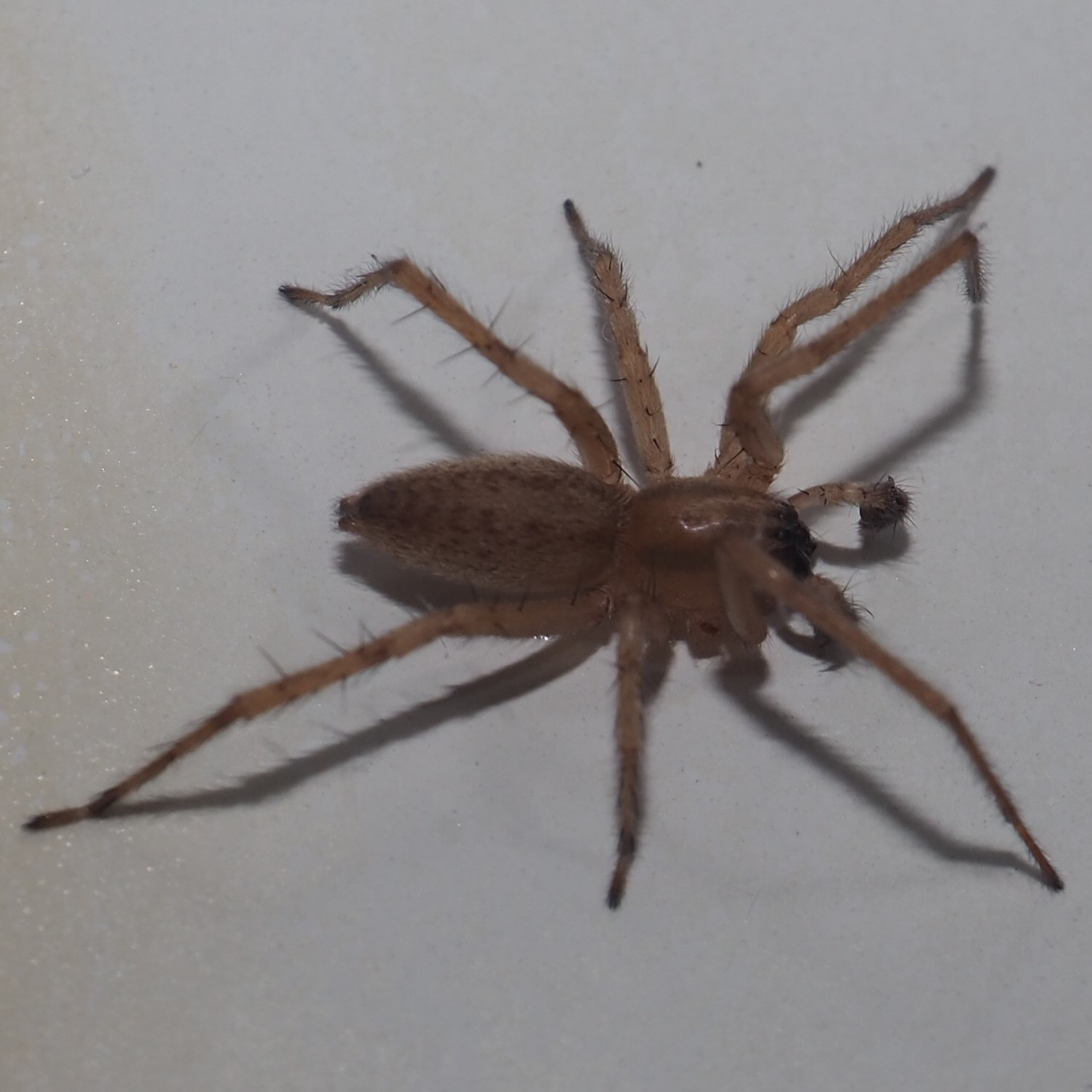
I think all the rest are large Crab Spiders. First is one kind, probably of genus Bassaniana. Second and third are the same individual, both likely same as picture 1.
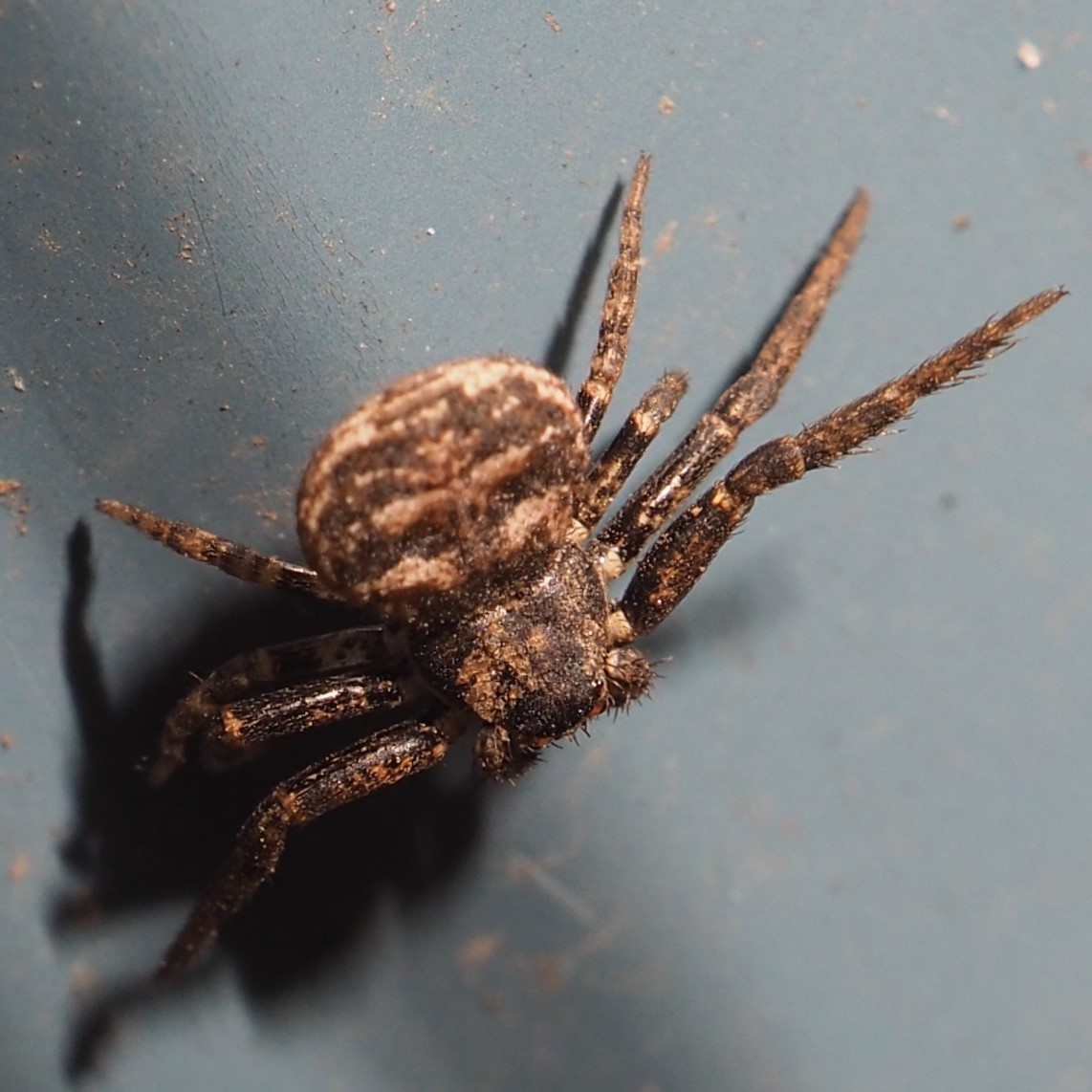
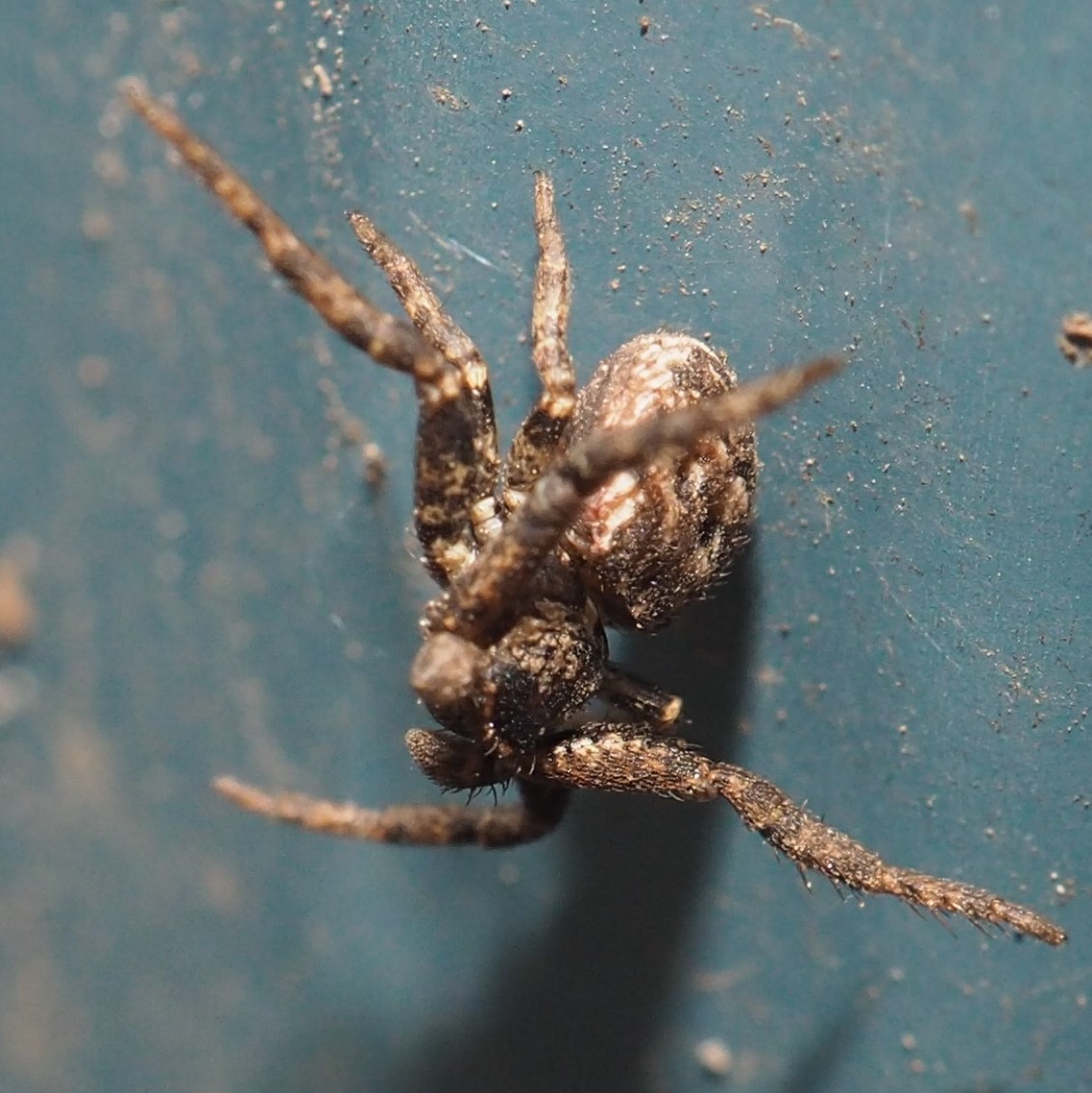
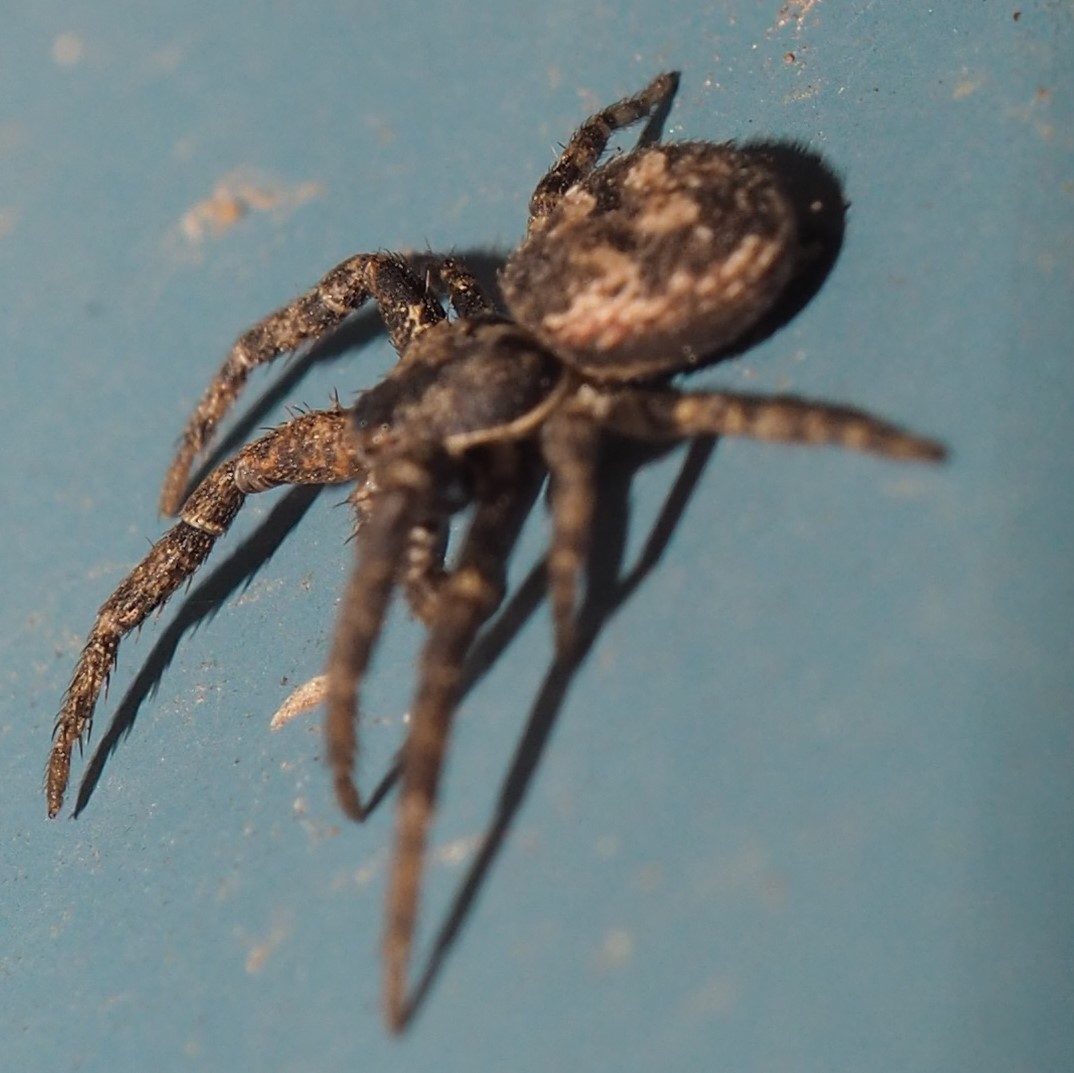
This one is another kind of large Crab Spider of genus Xysticus. I like its decorations.
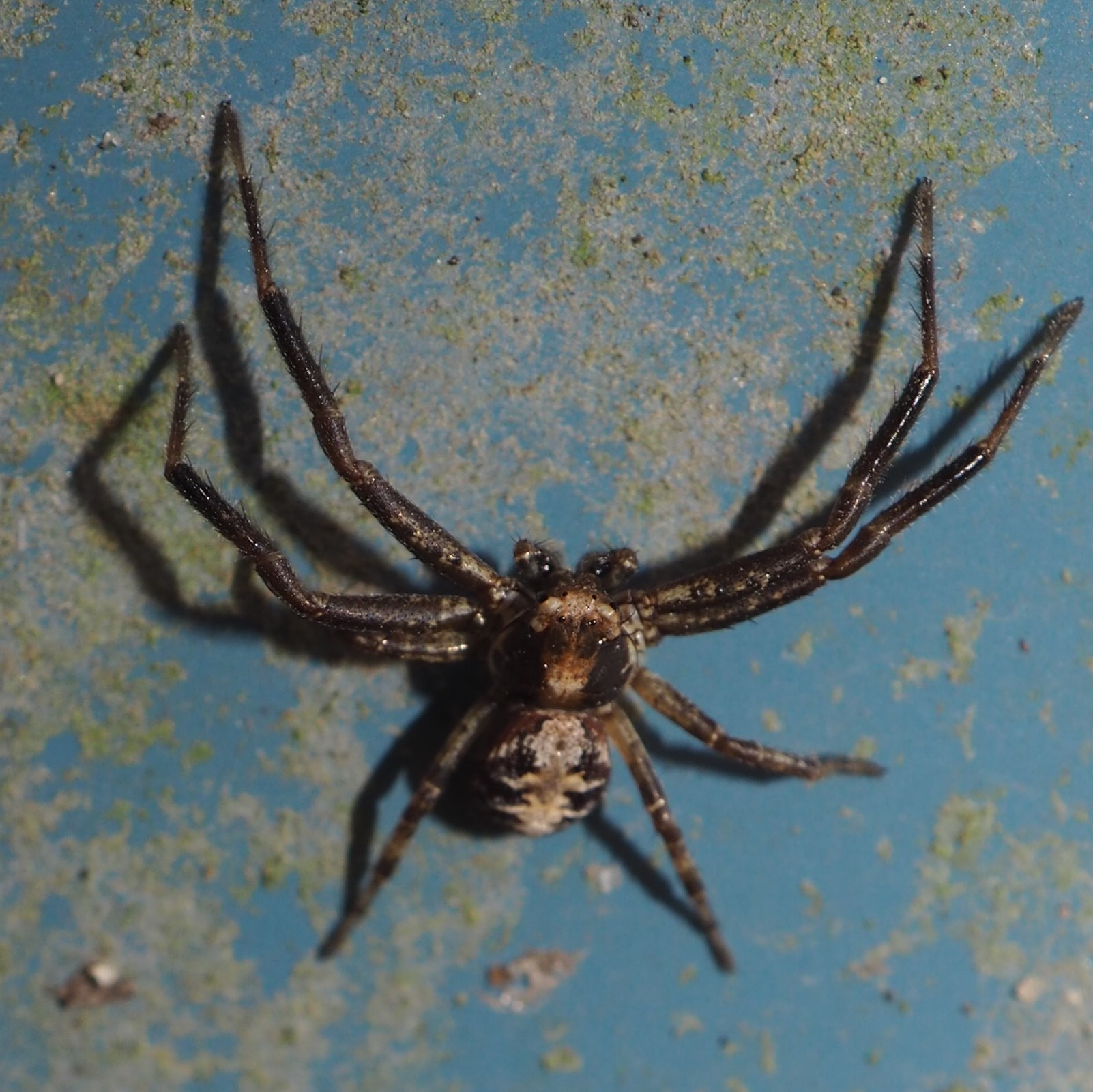
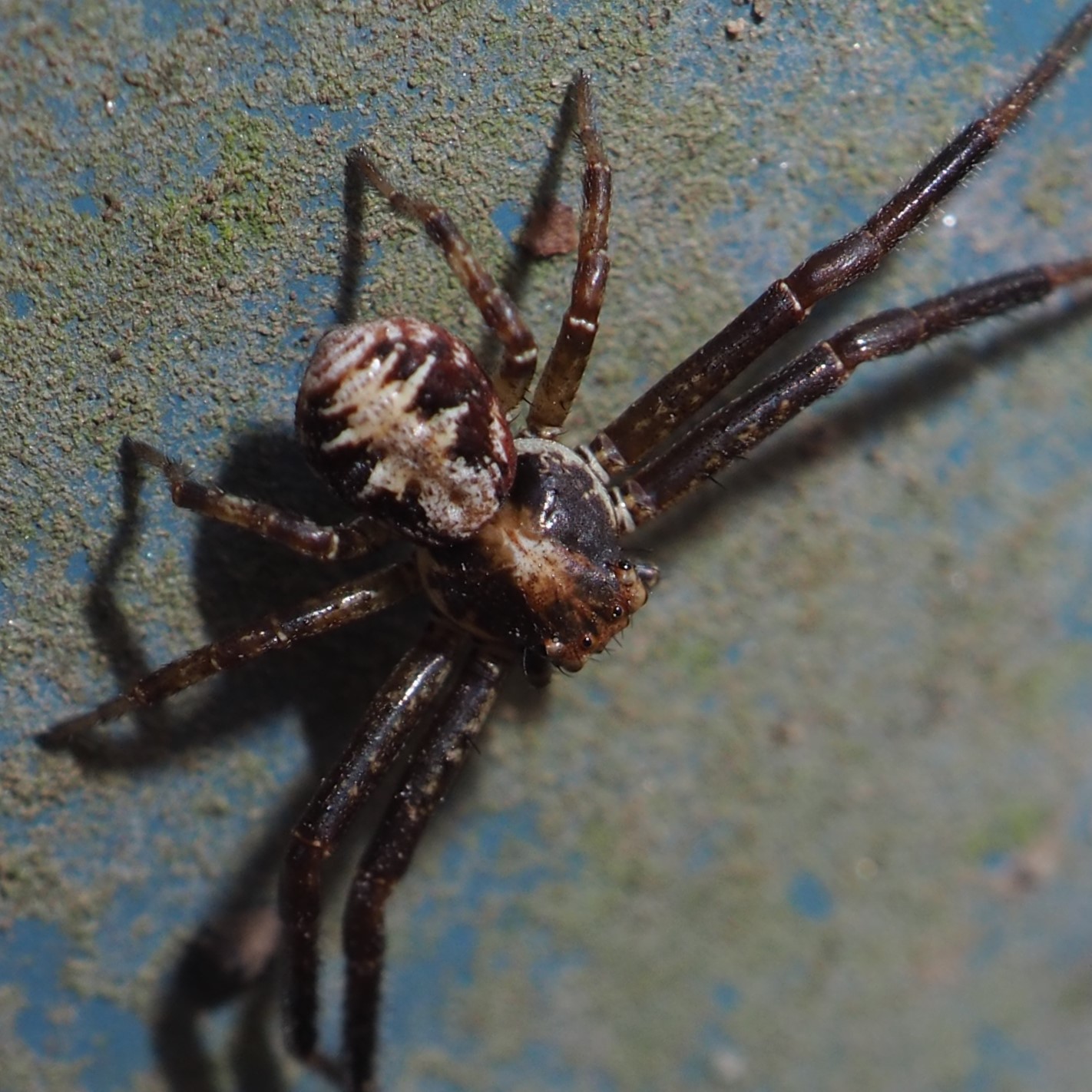
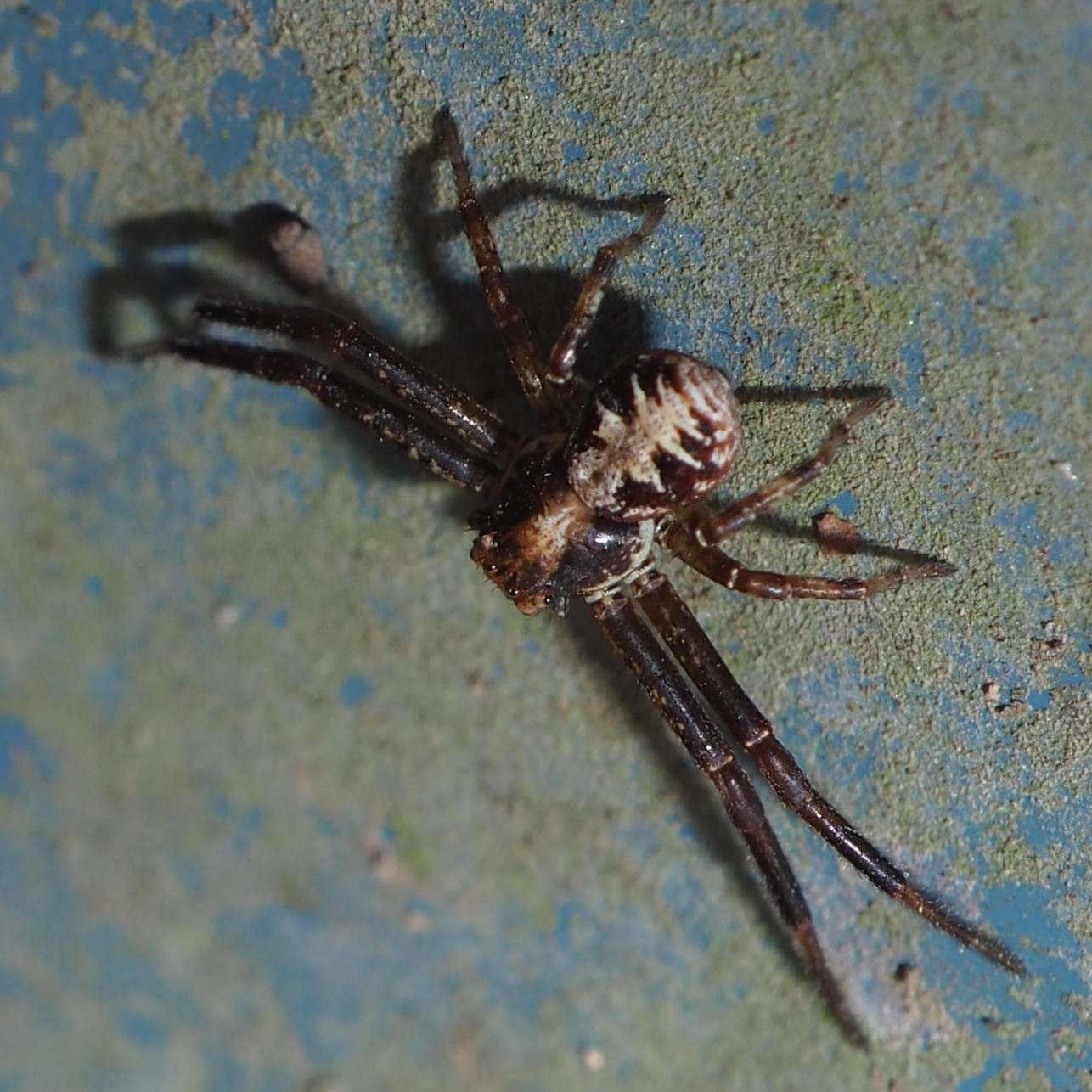
Here is another kind of big Crab Spider, probably of genus Bassaniana. Second and third are a different kind.


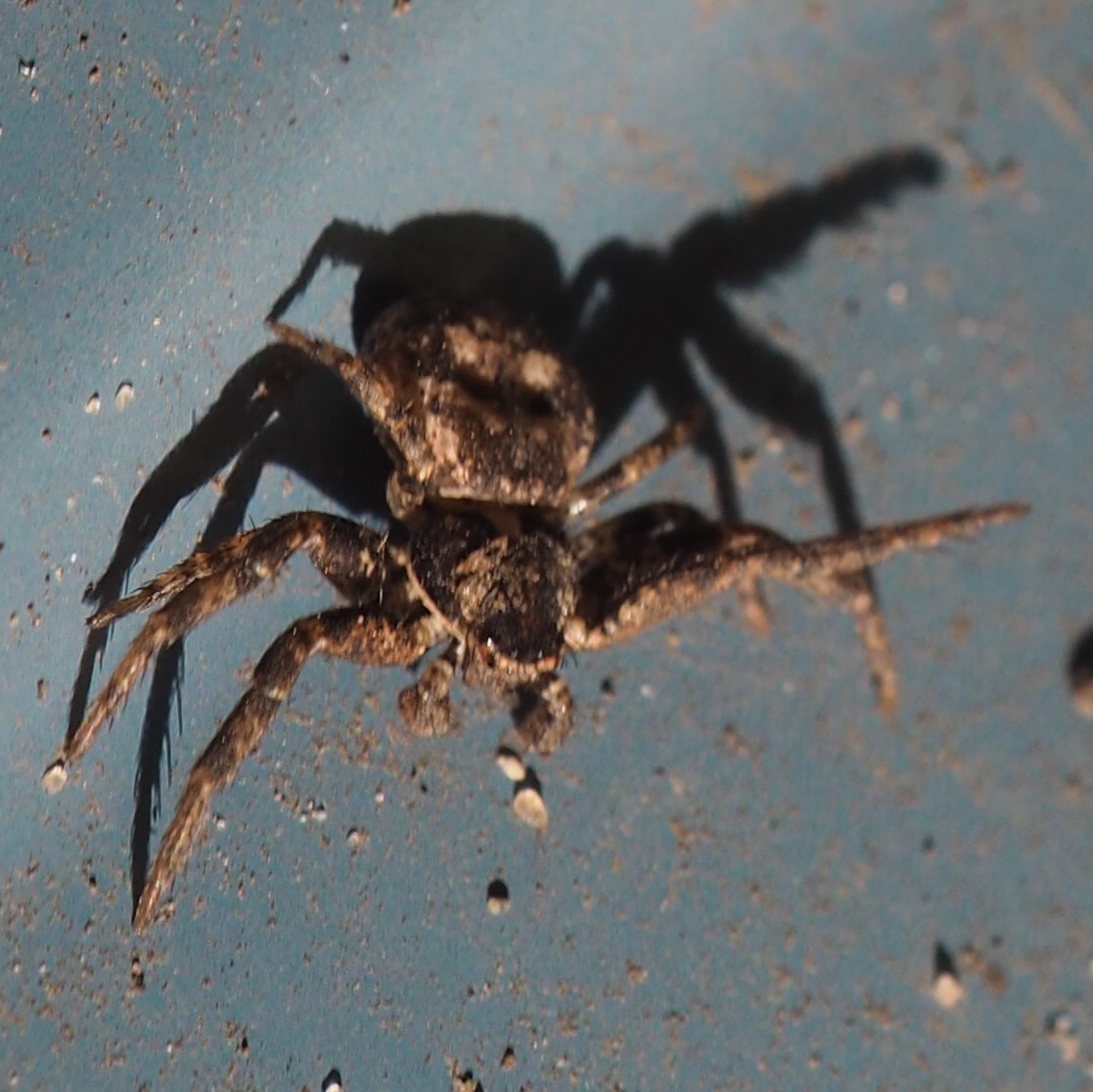
This Ichneumonid Wasp is of genus Xorides, says @richardlbaxter of iNat, who thinks it may be X. calidus.
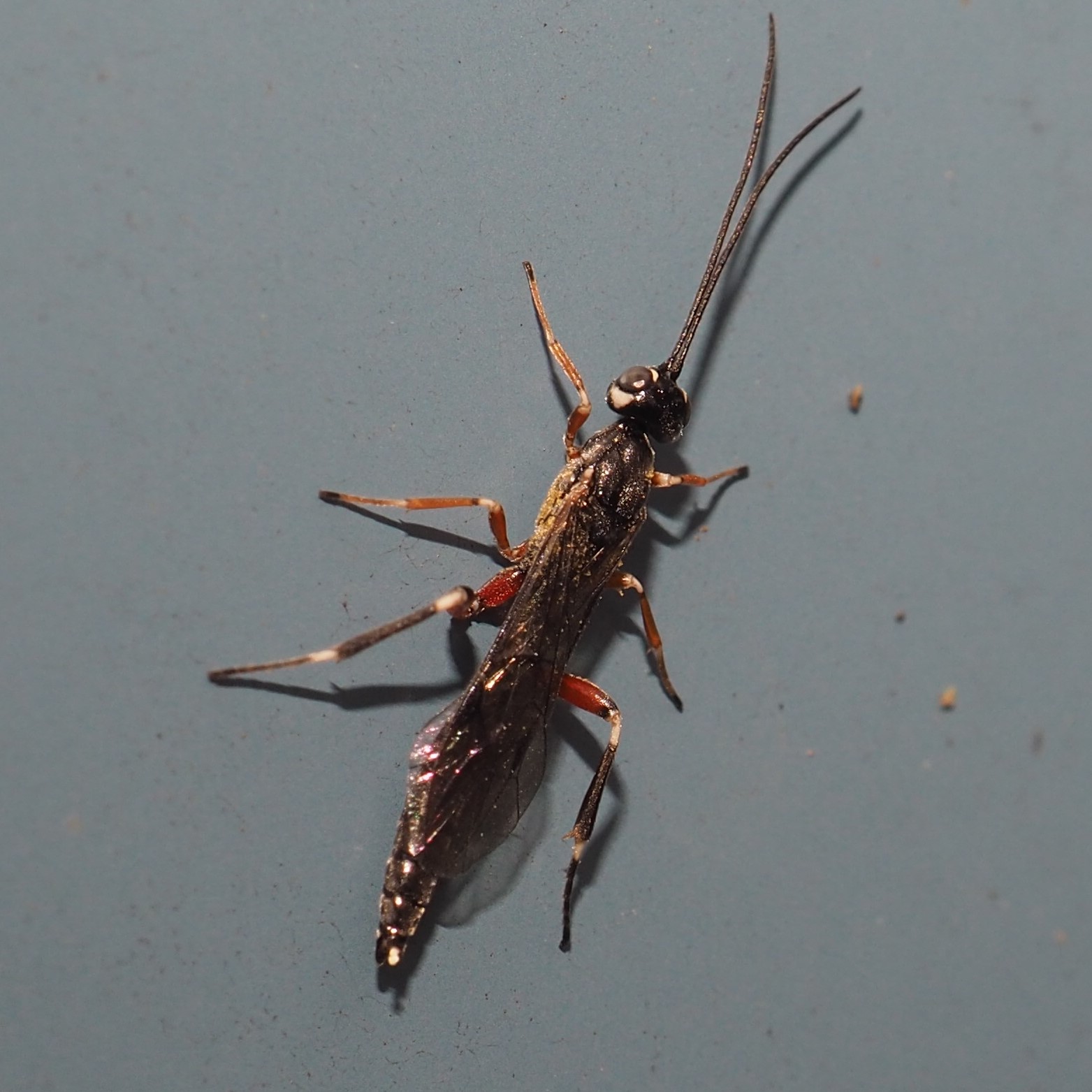

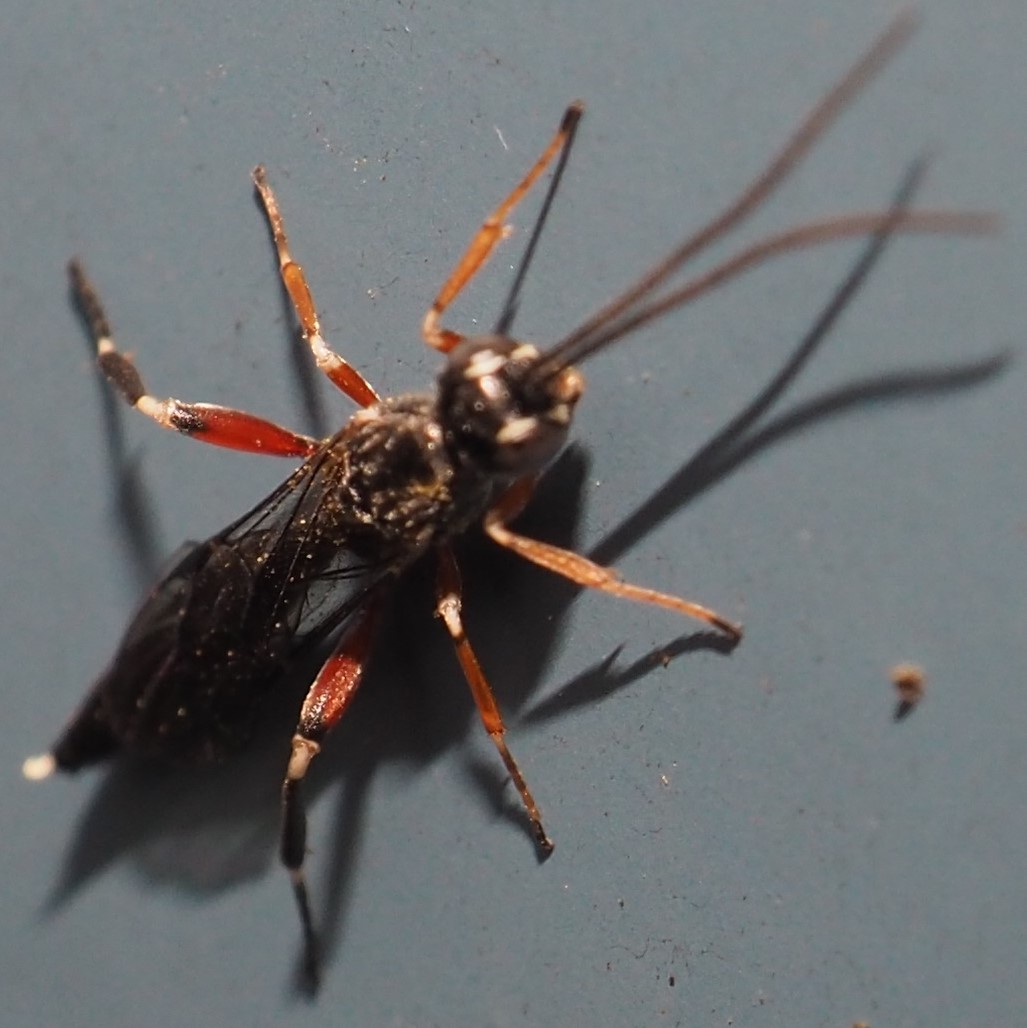
We have one other species, the Domestic Cat. Spooky loves being outdoors. Look at that smile. She also loves her Castle. Unfortunately I surprised Tripper with this second shot. Meanwhile Kathleen Seidl sent this picture of her son David spraying a window and spooking their cat too!
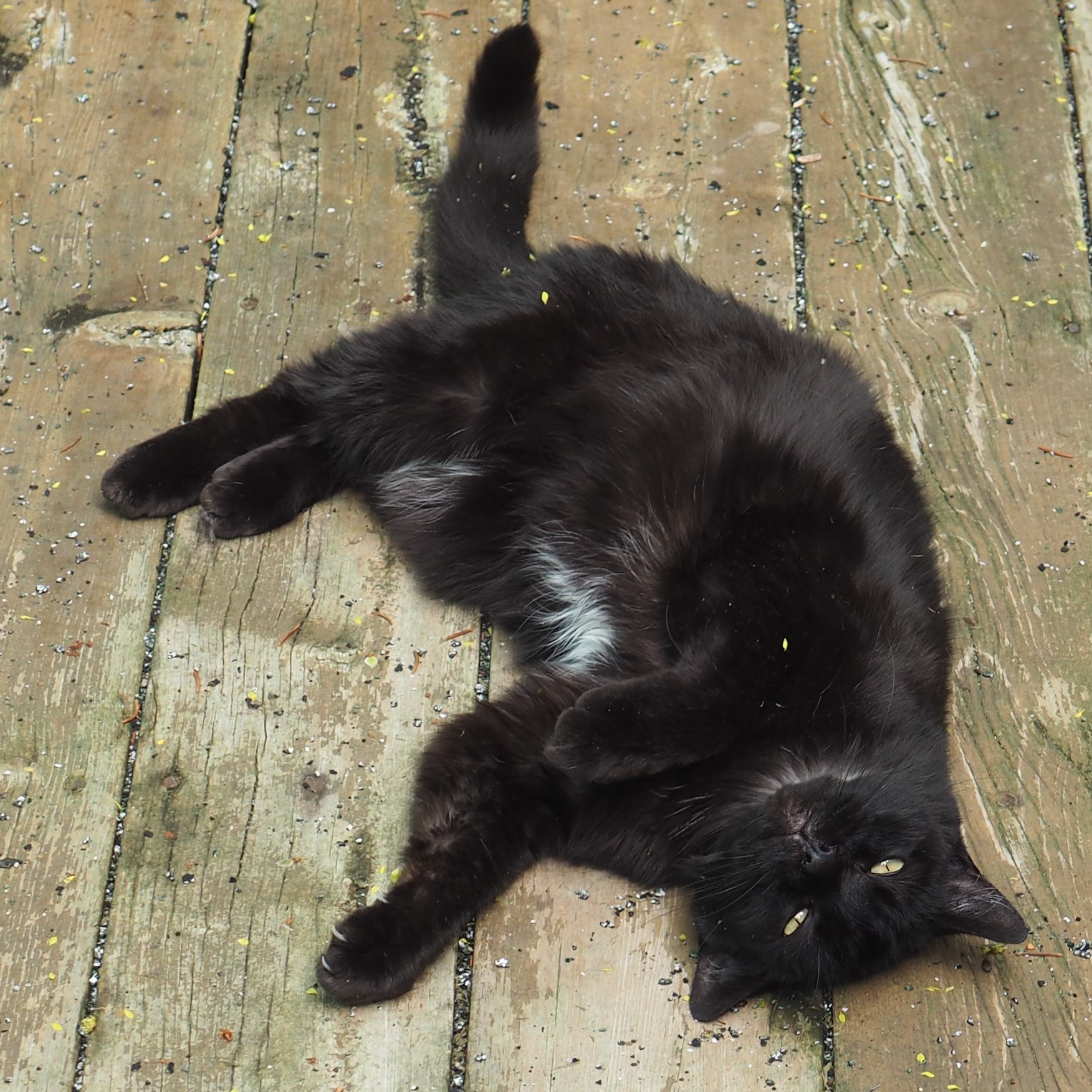
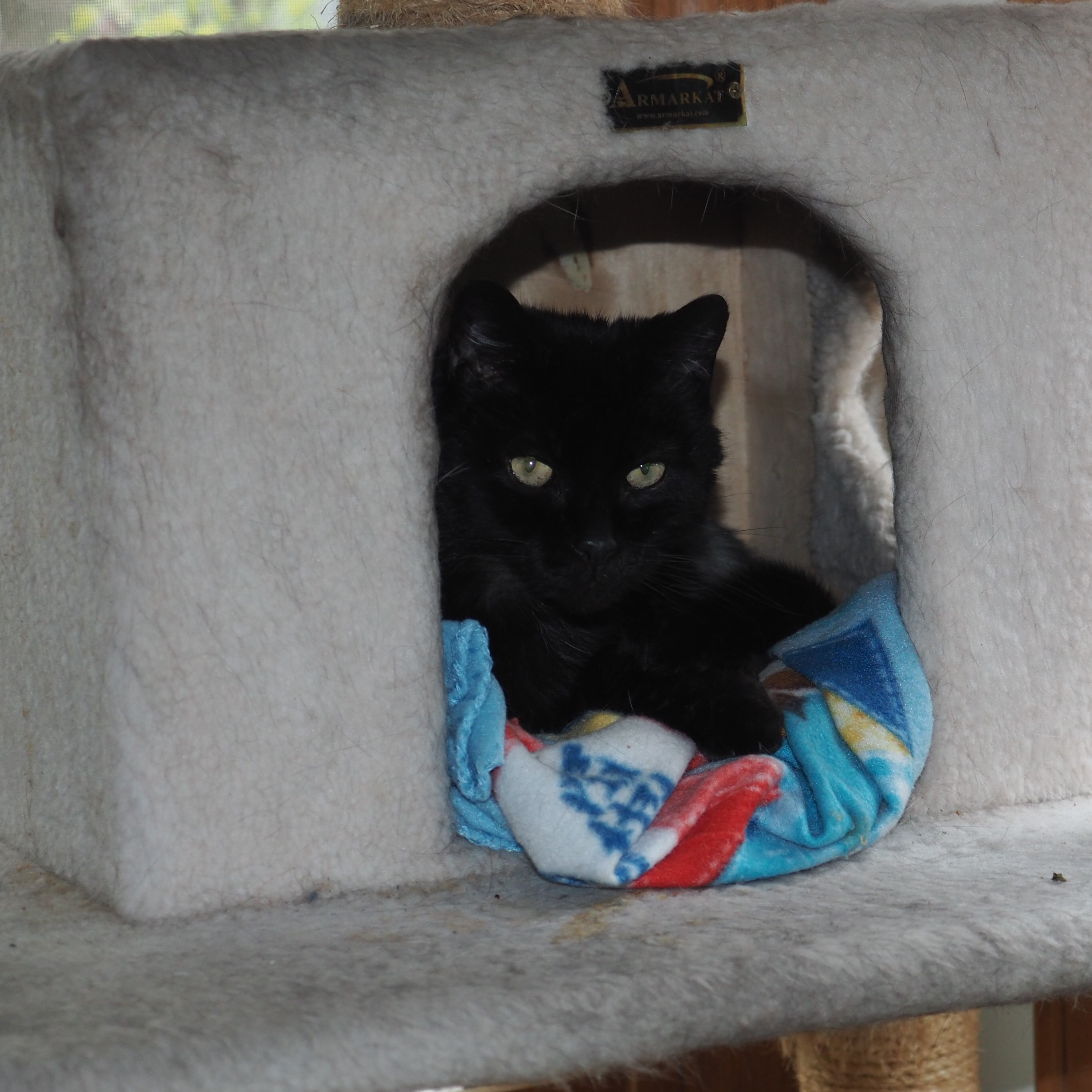
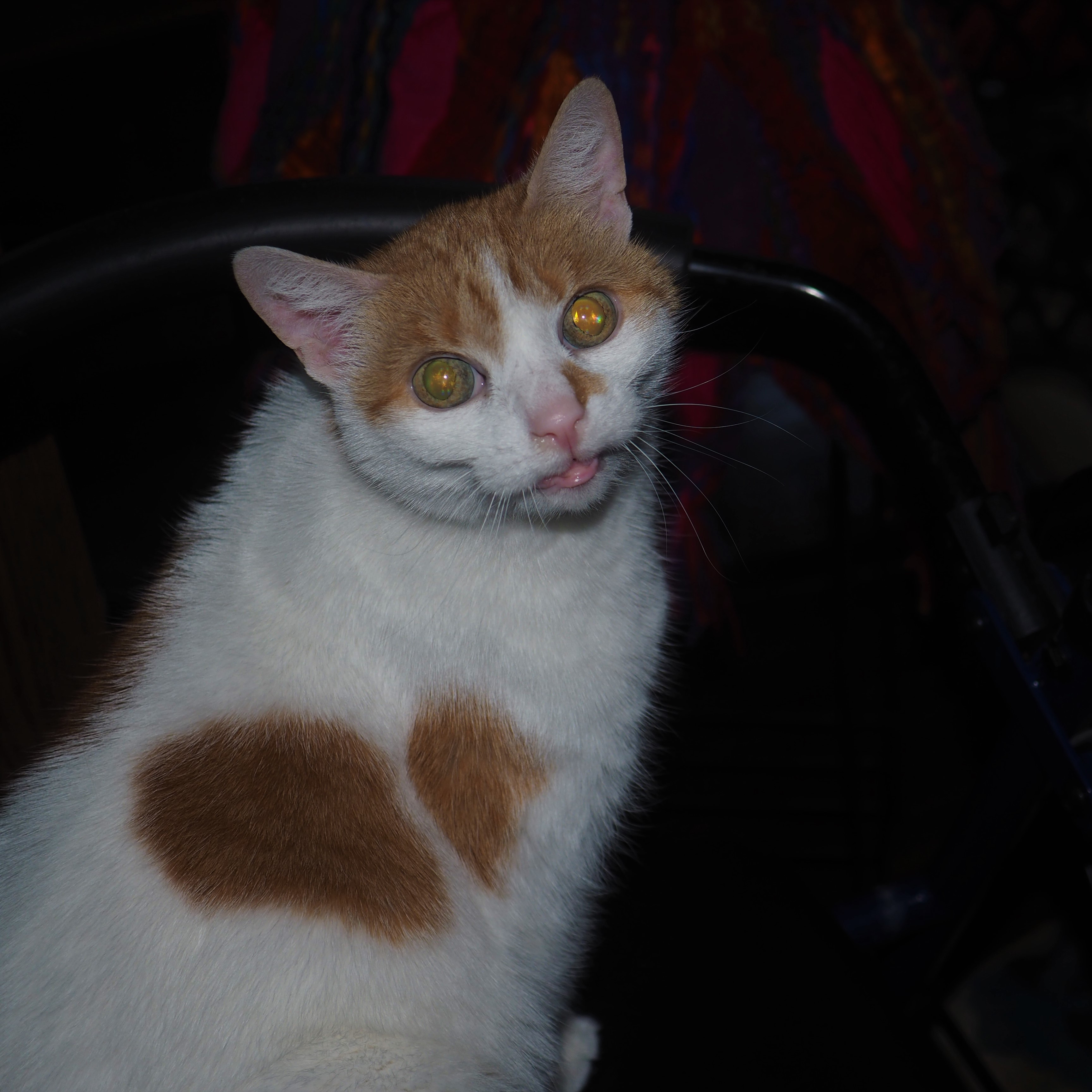
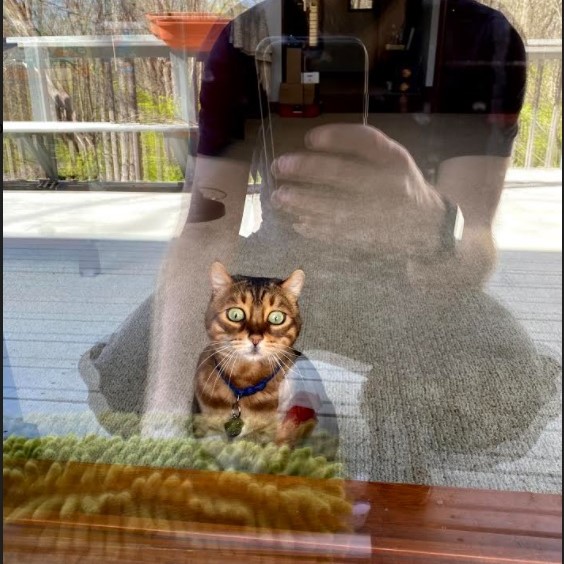
Here are two of the baby Redbud trees, much pinker than they were last week!
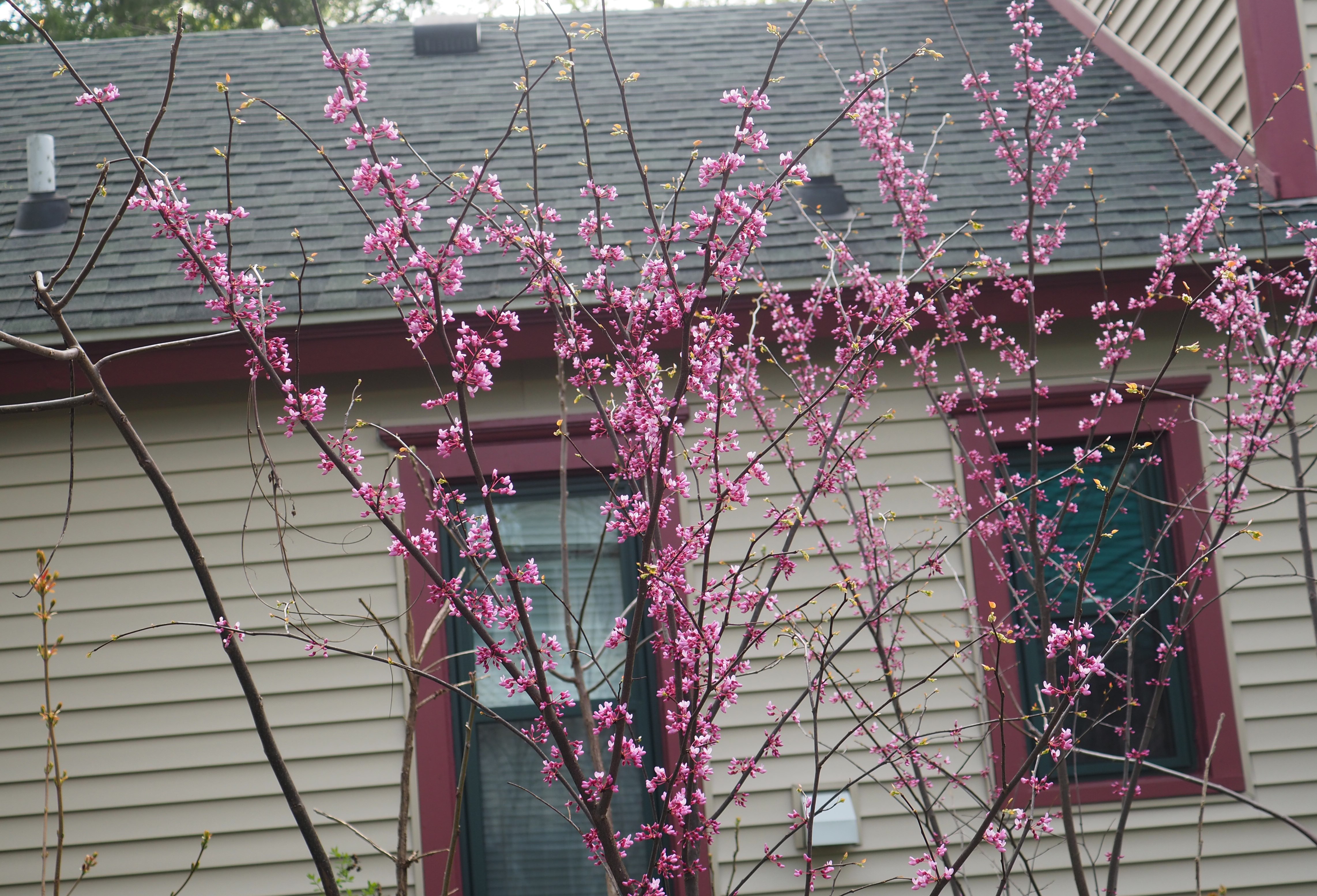
Since I gave you my best Homily of the week at the beginning, let me just say I hope everyone is doing what they like (Film Club is back, for instance)! As the Beatles sort of said, Every one of us is all we need.
Love, Martha
Back to April 11, 2021
Forward to April 25, 2021
Back to main menu
copyright Martha O'Kennon 2021























































































